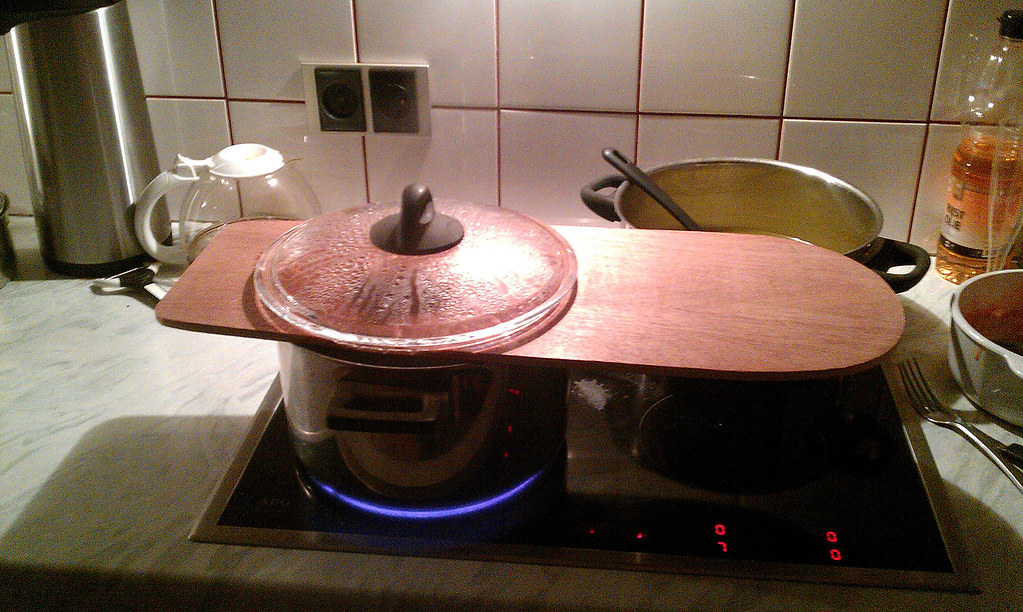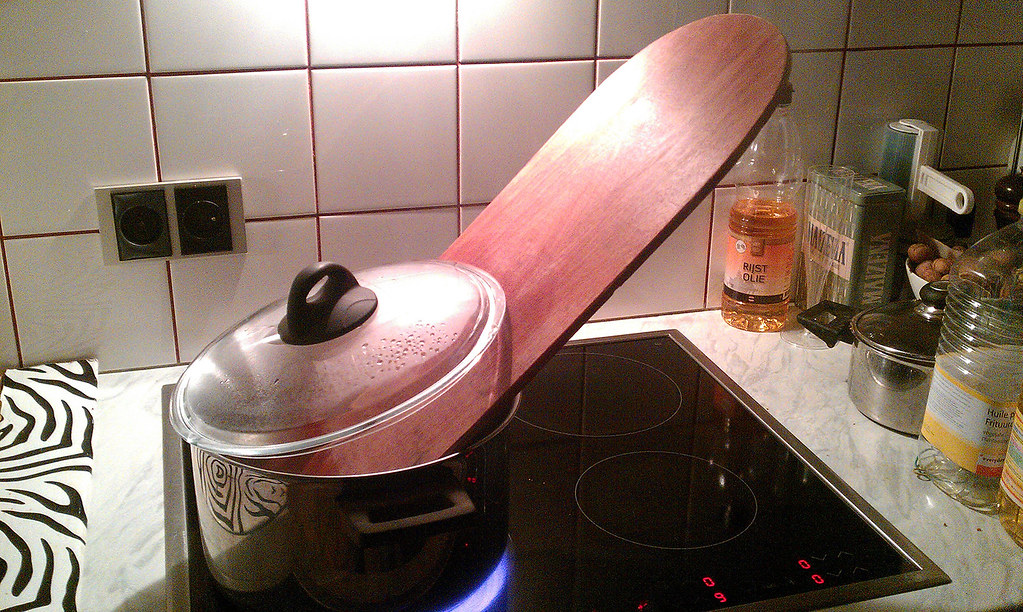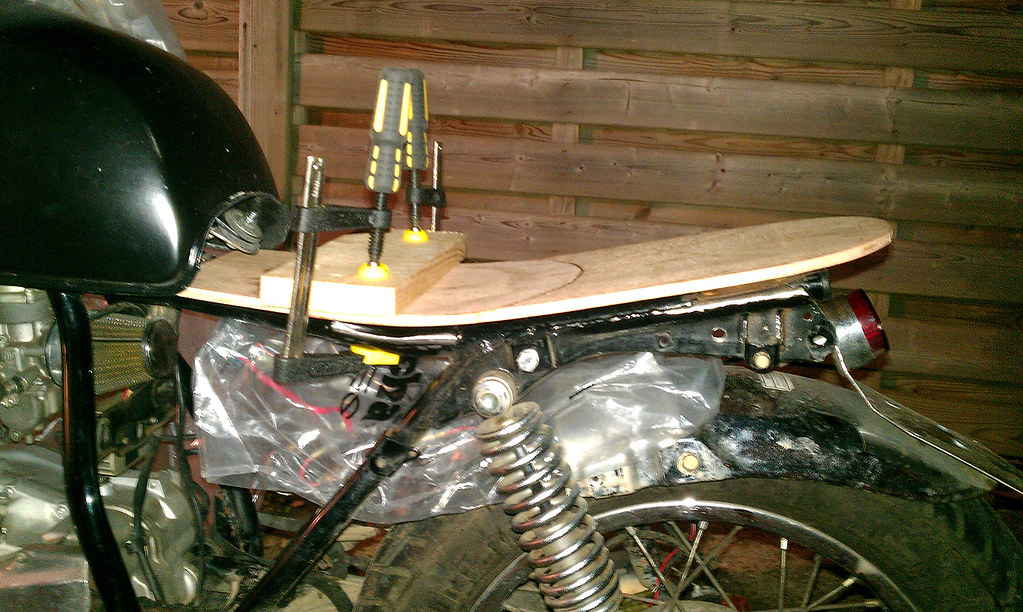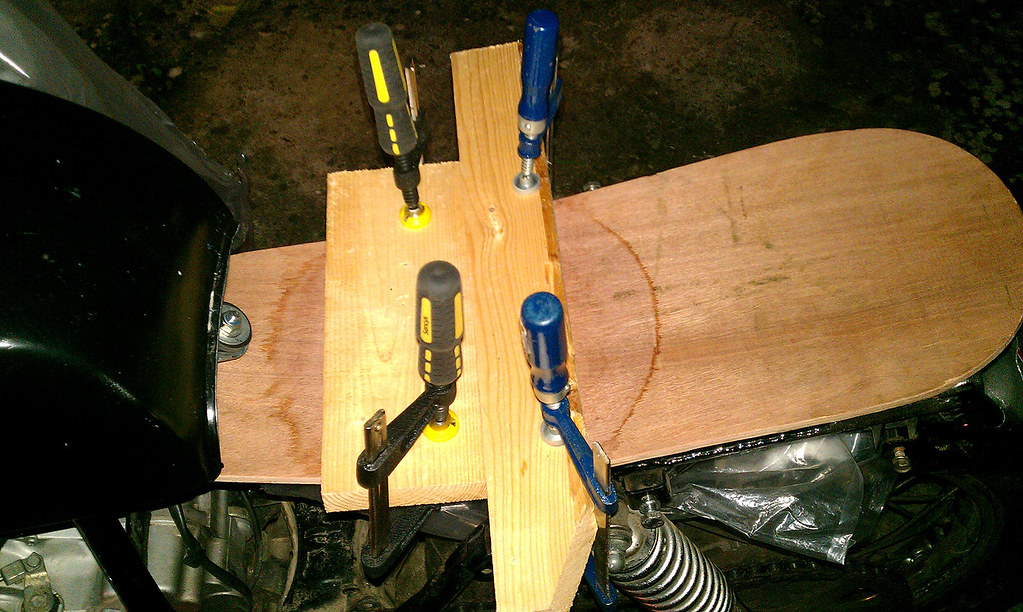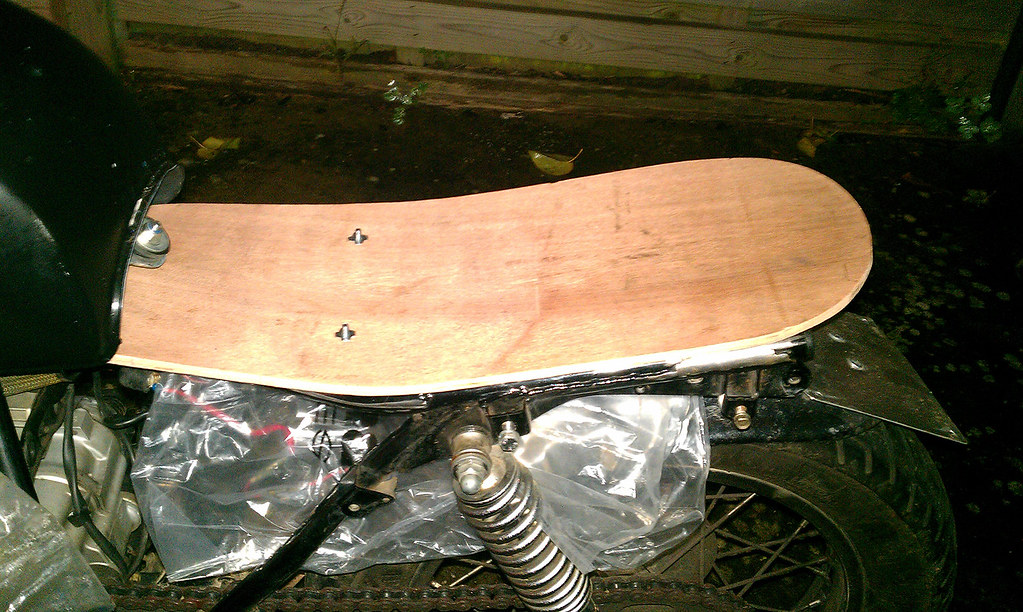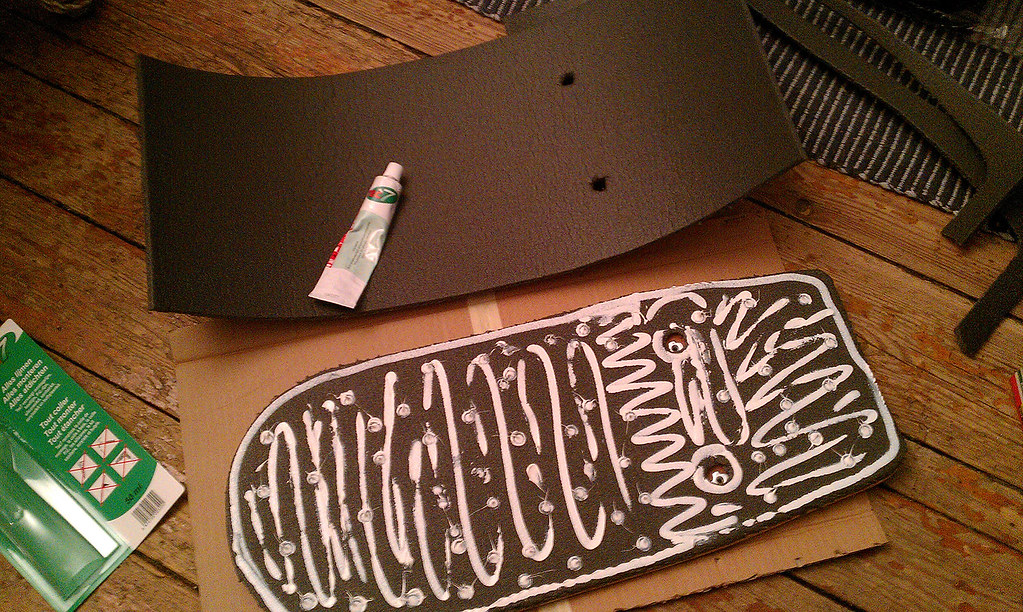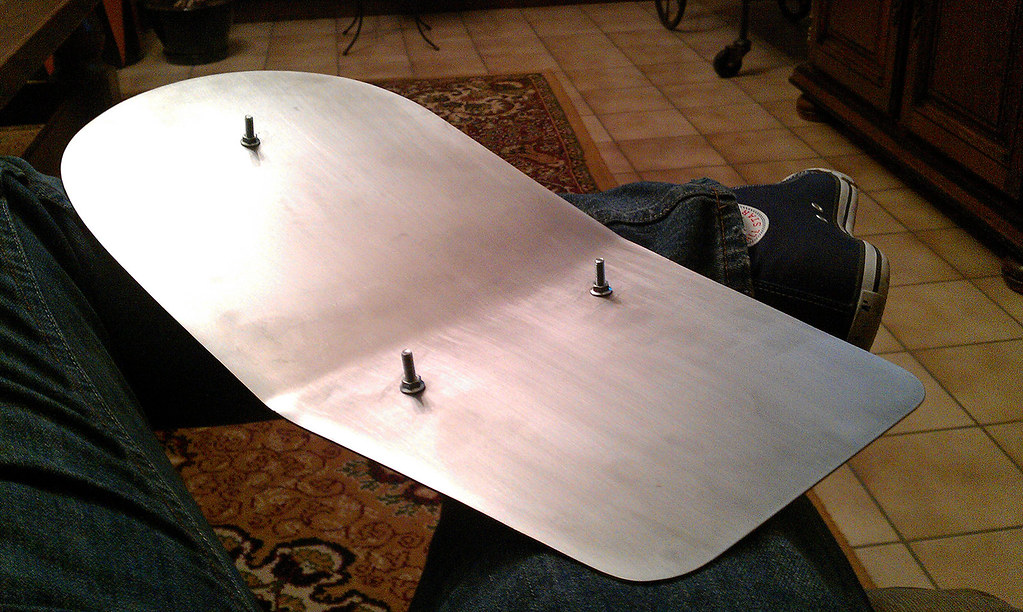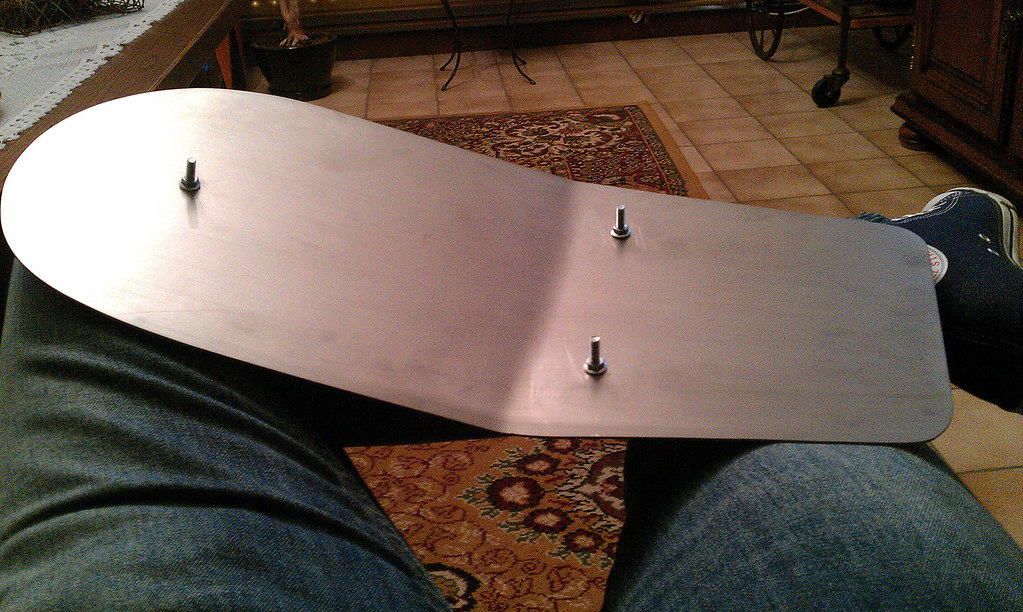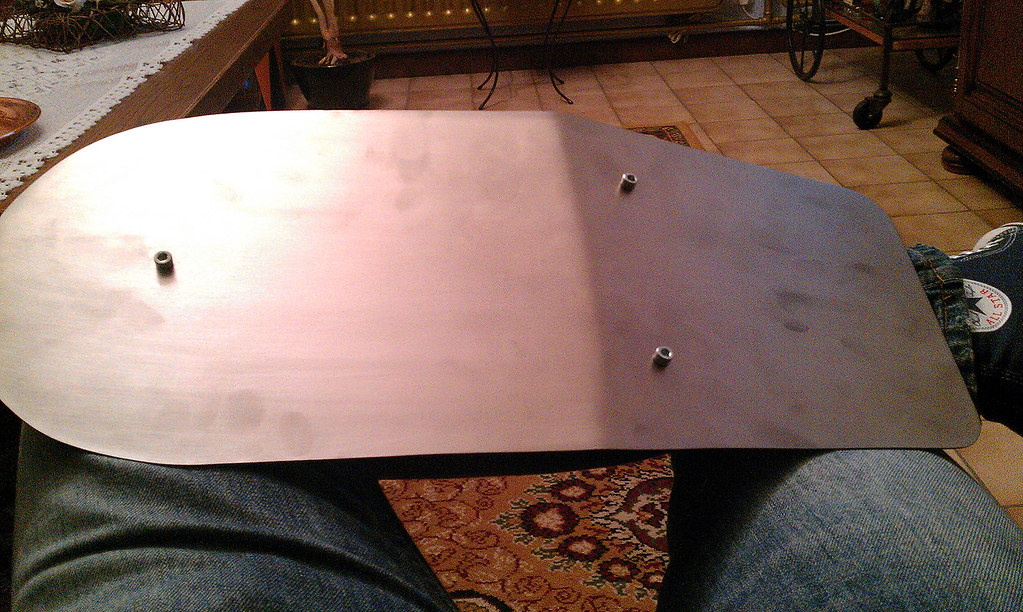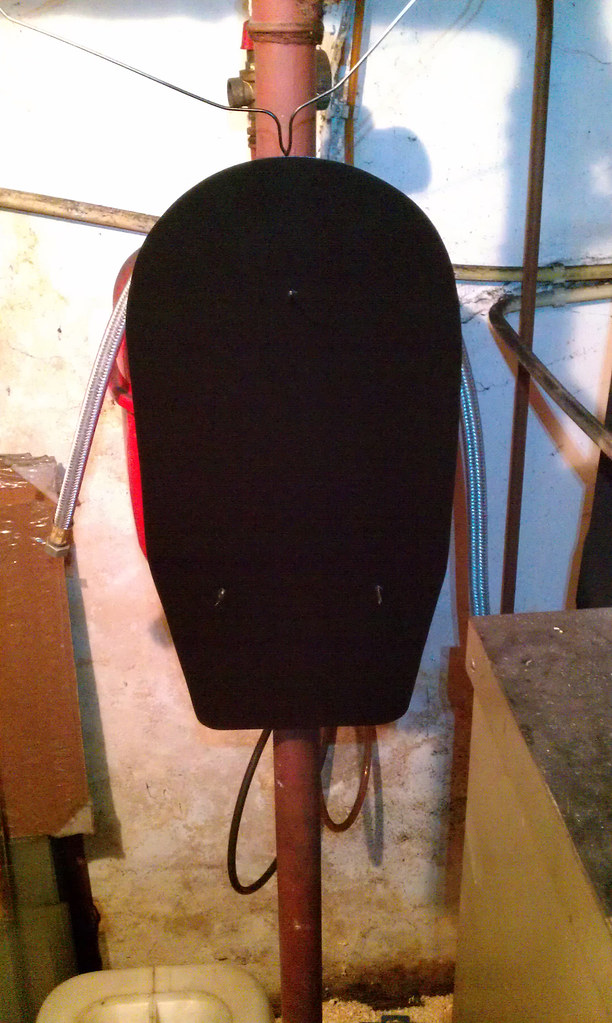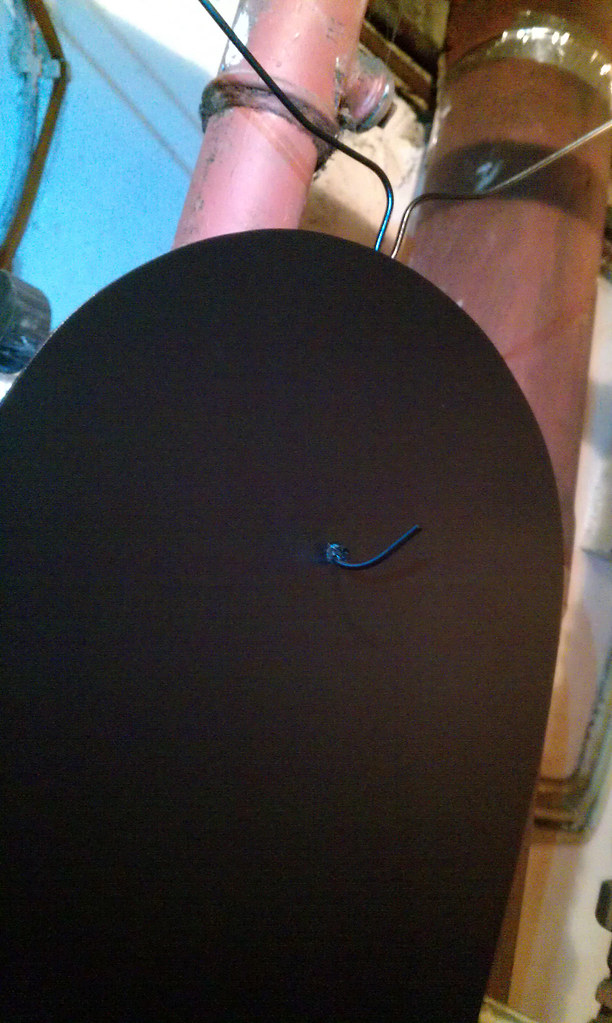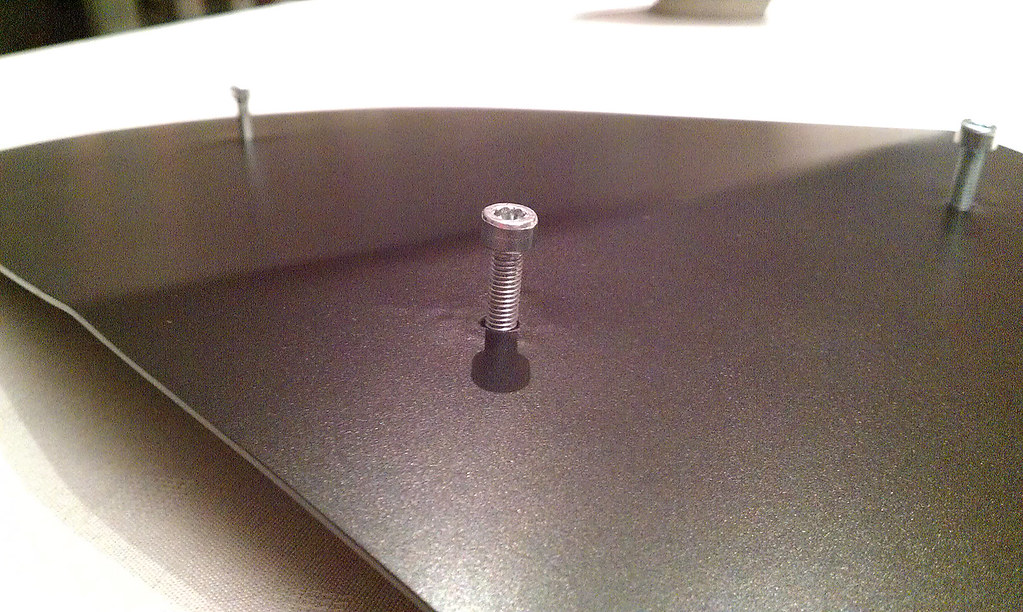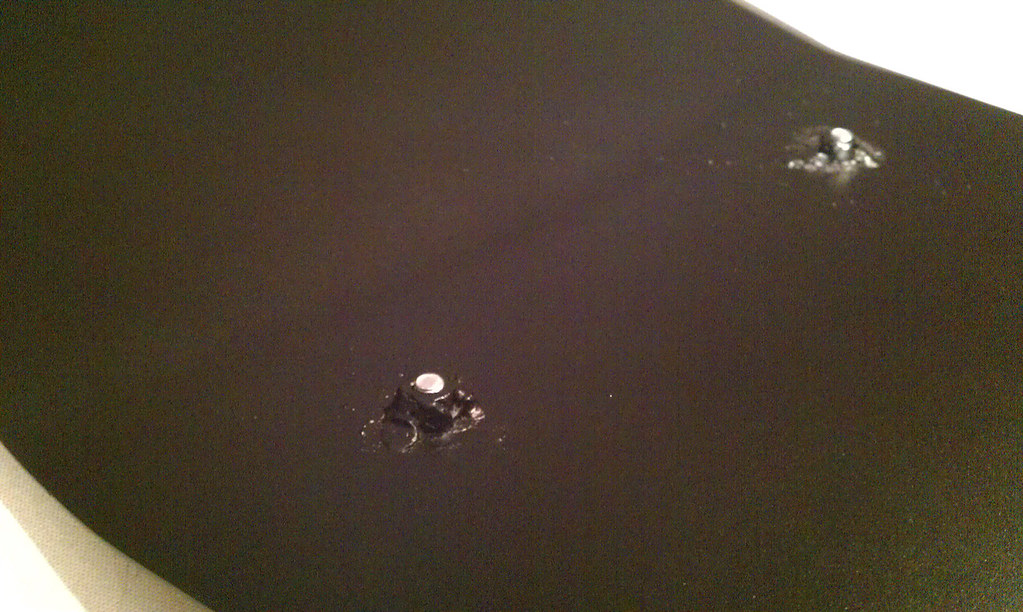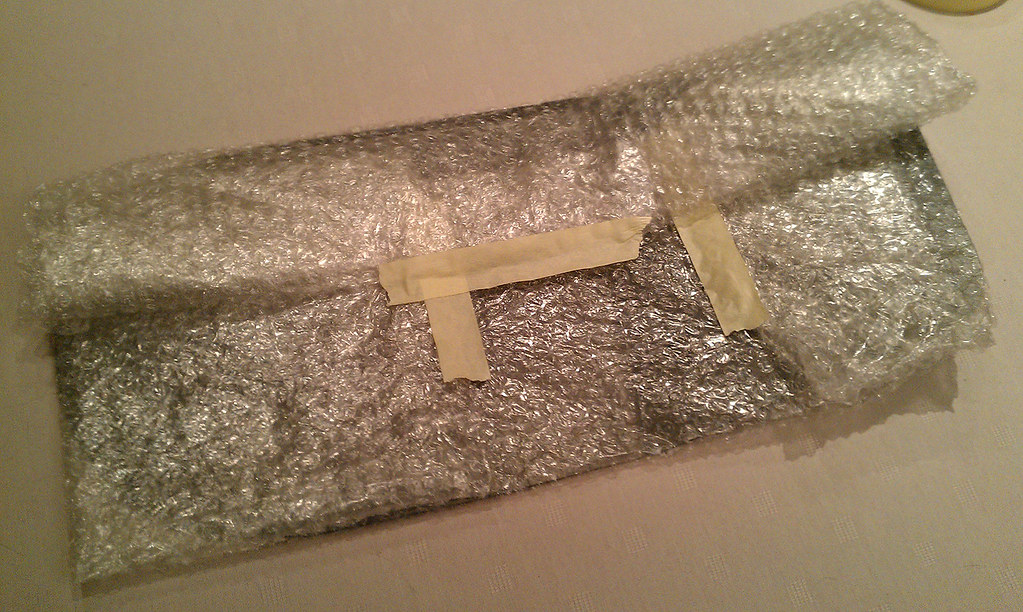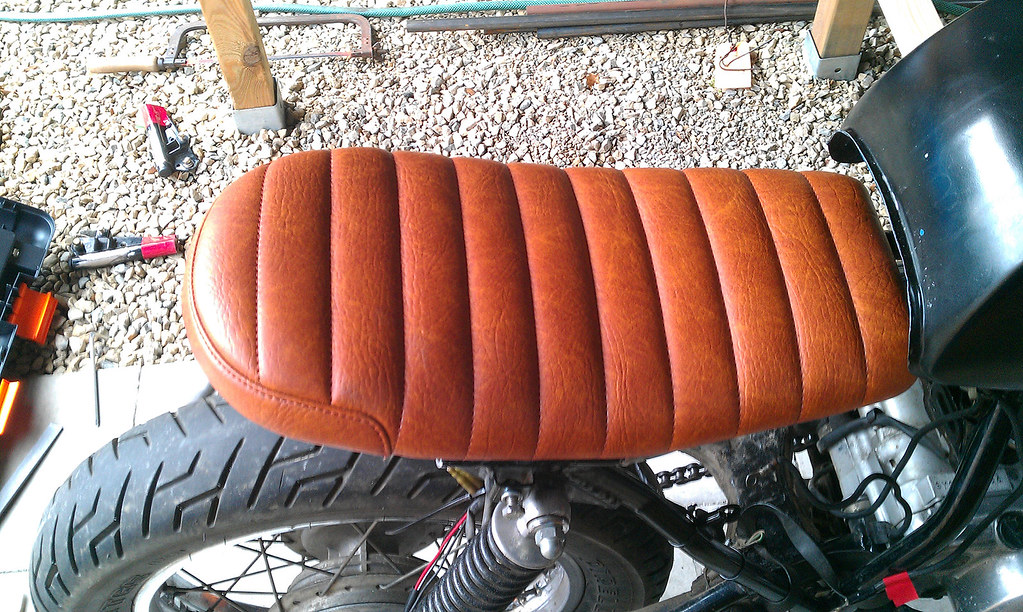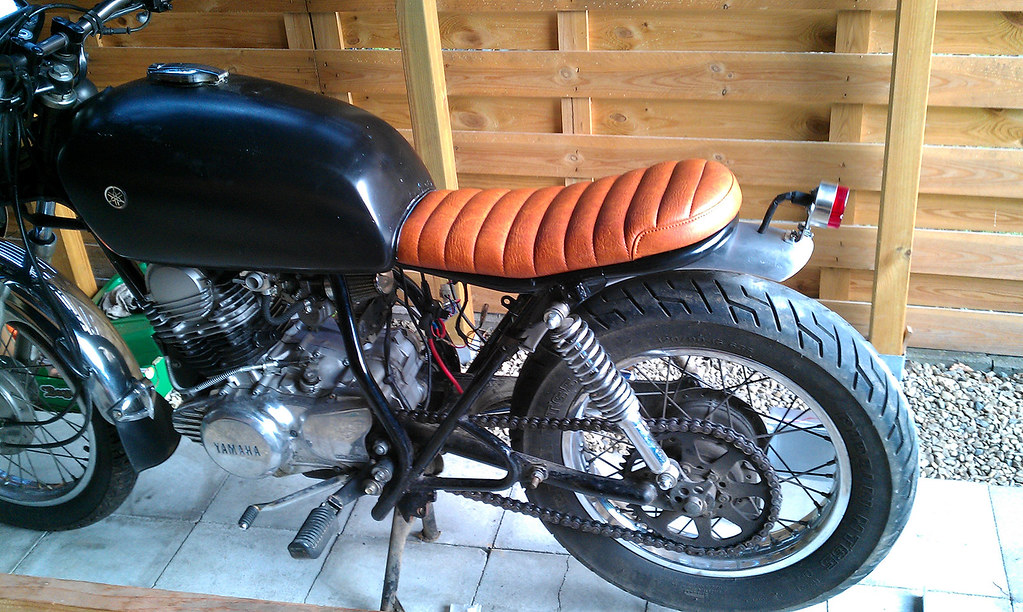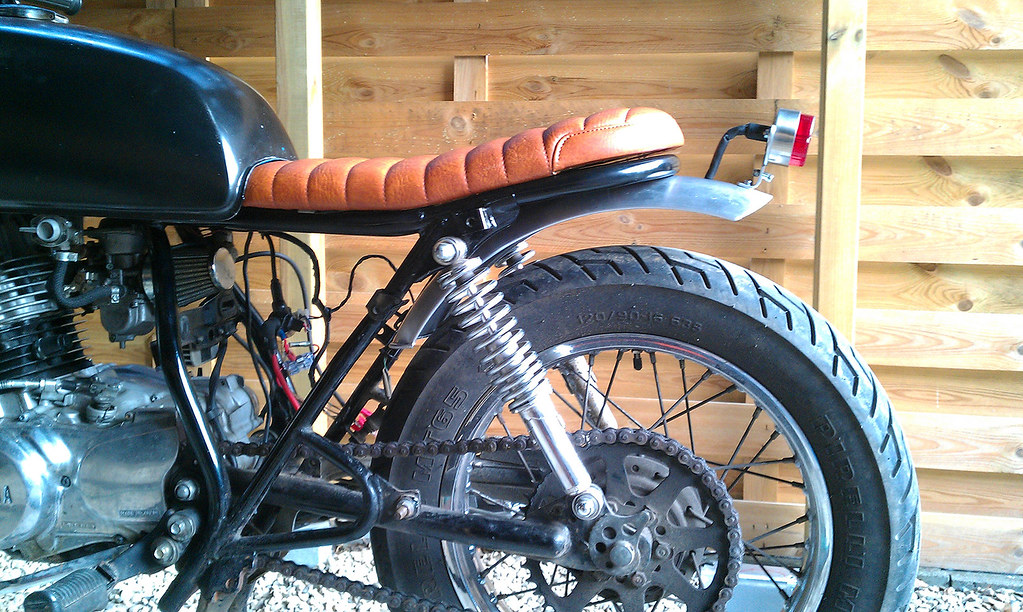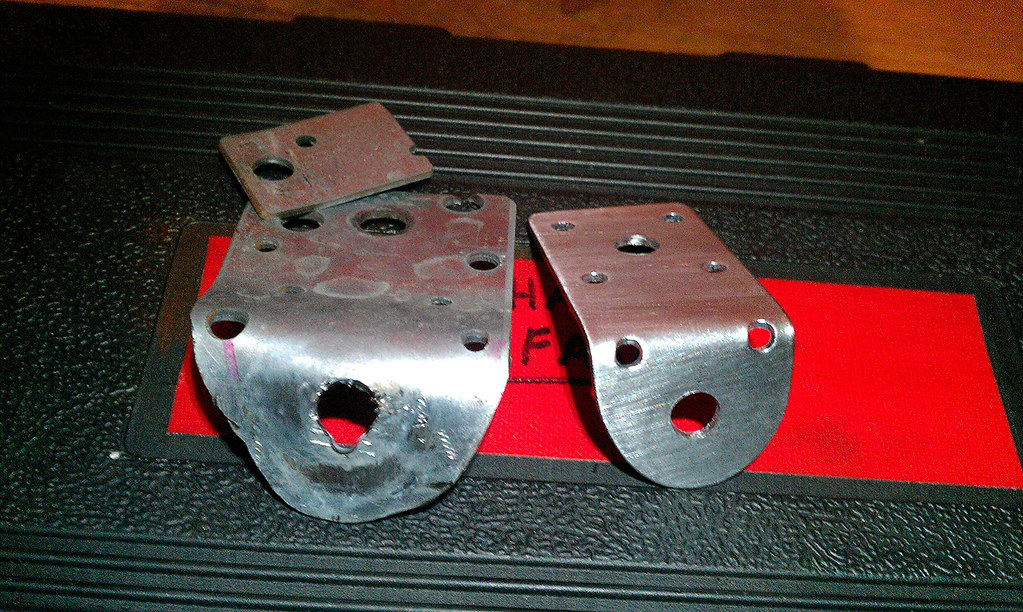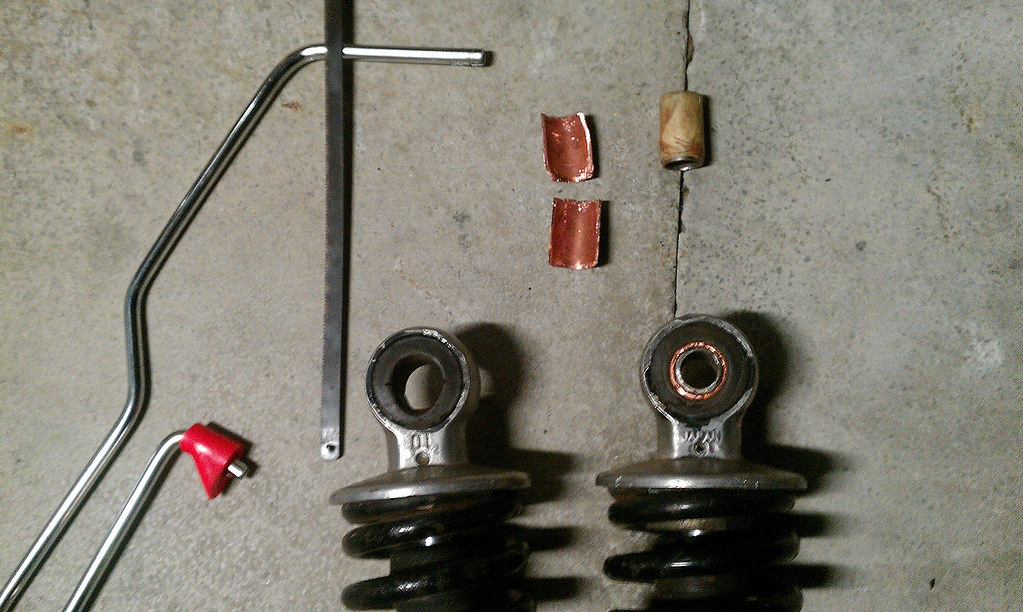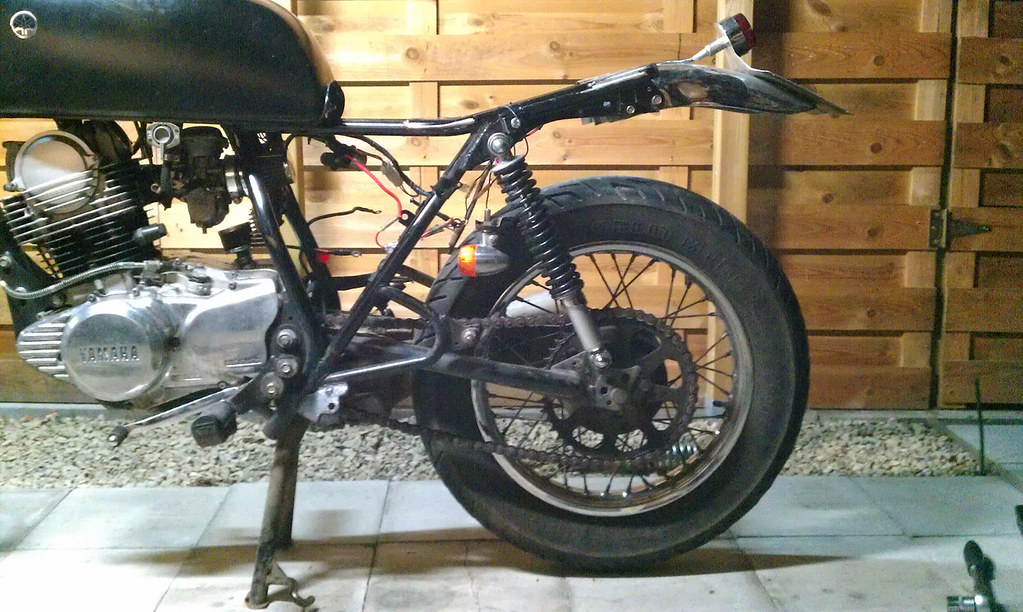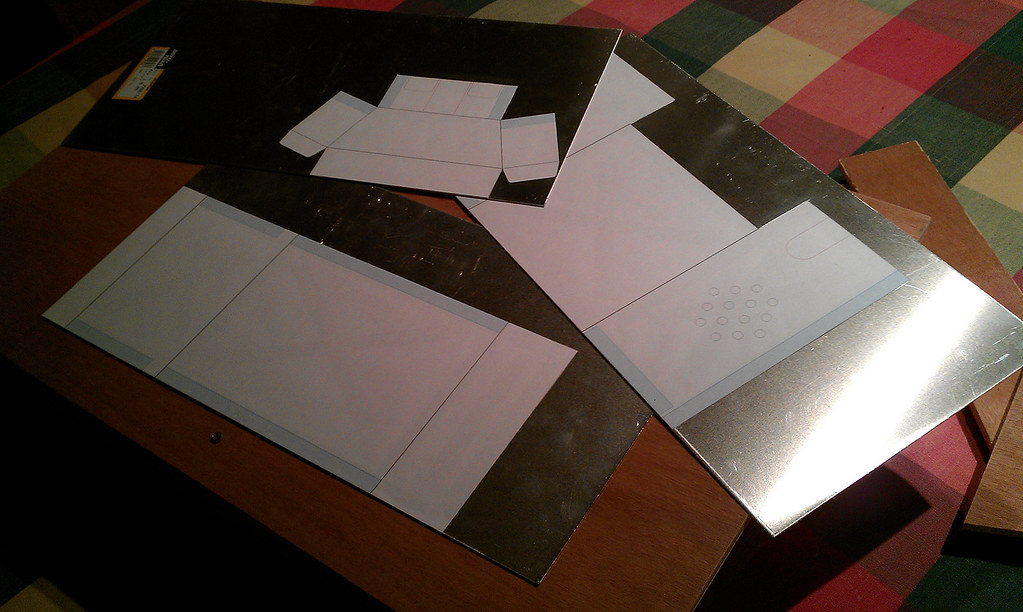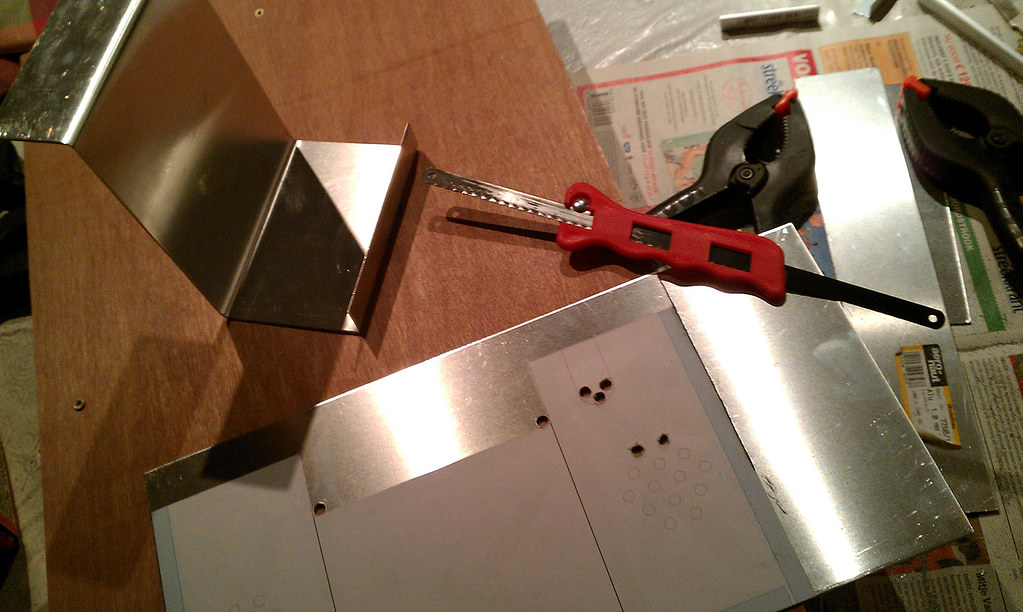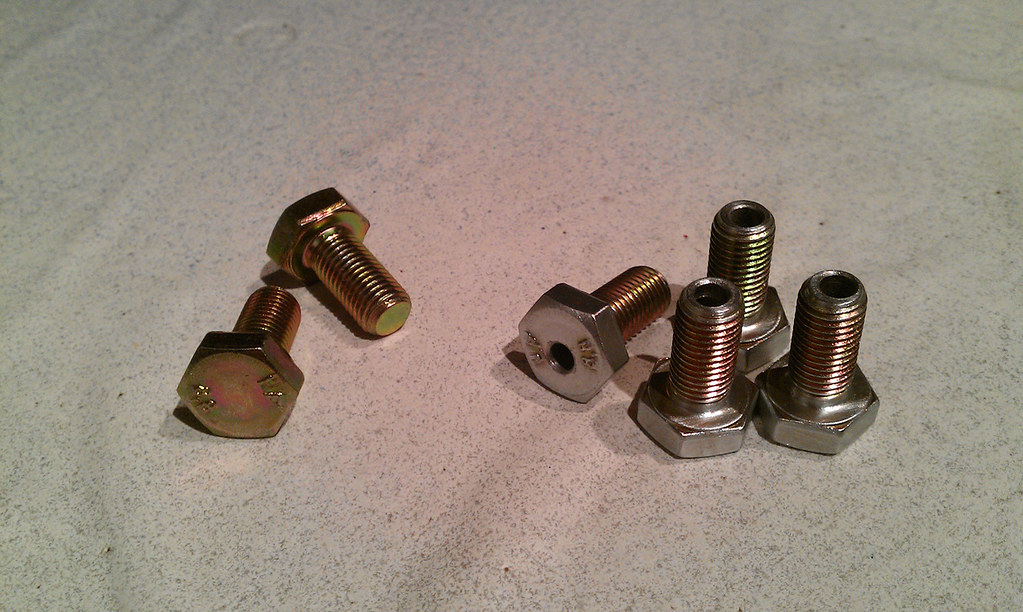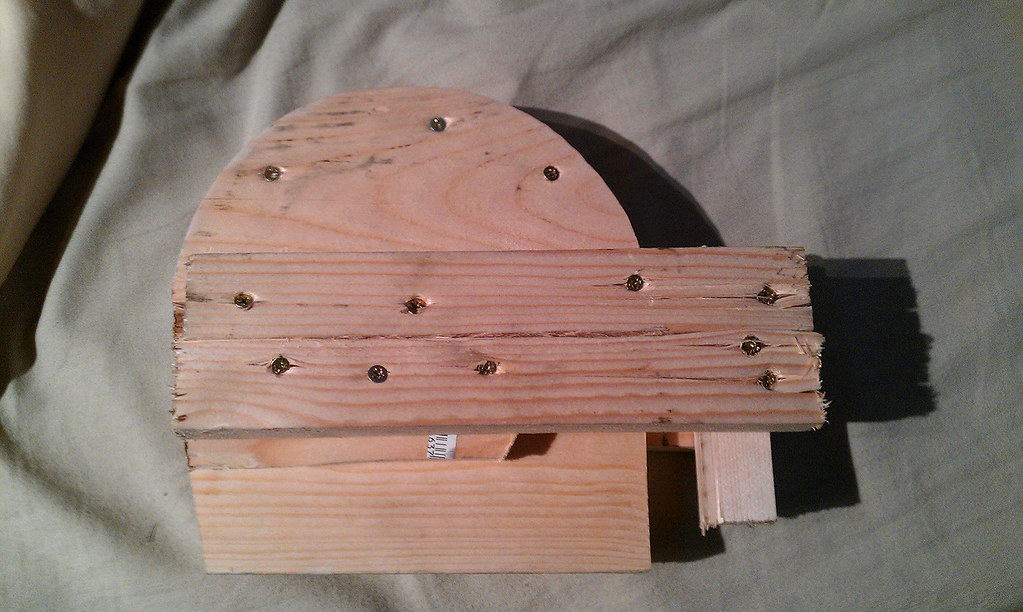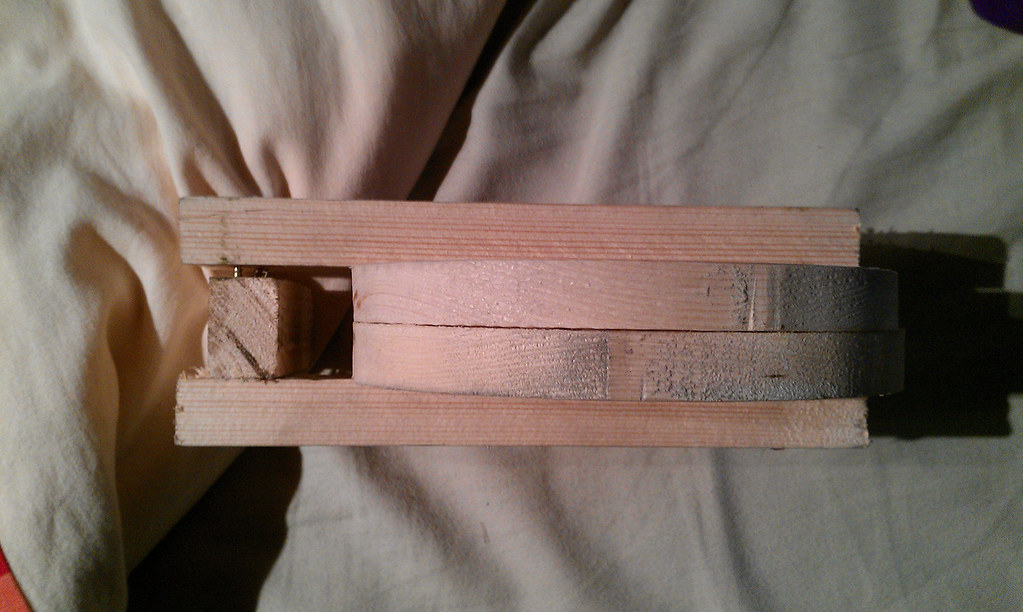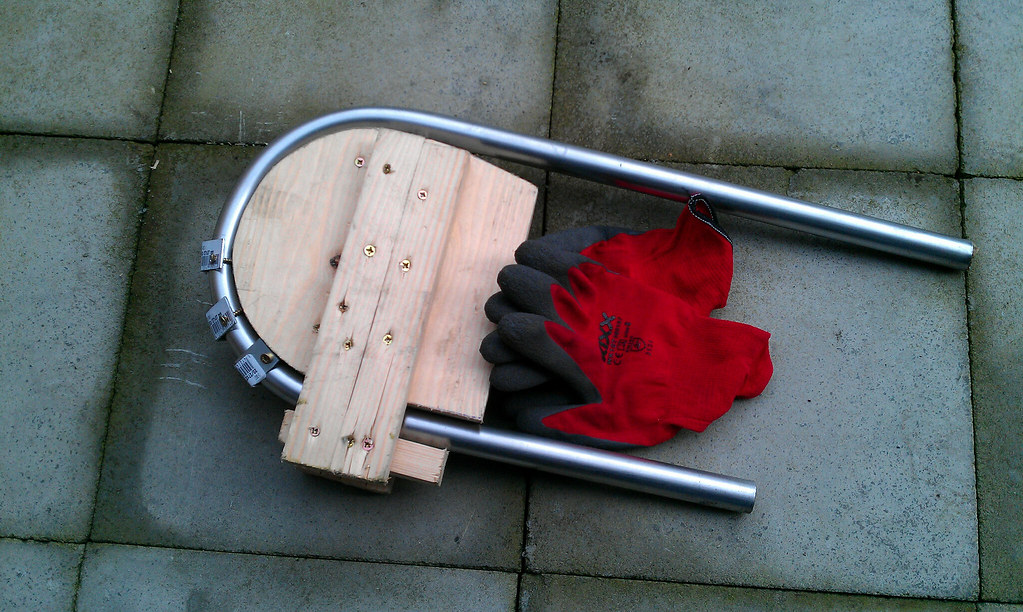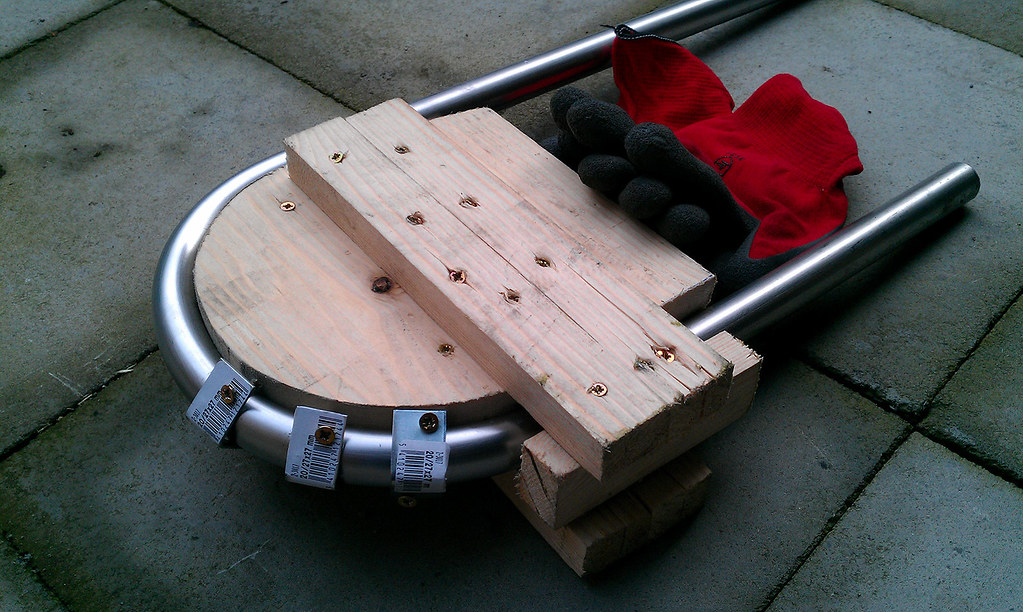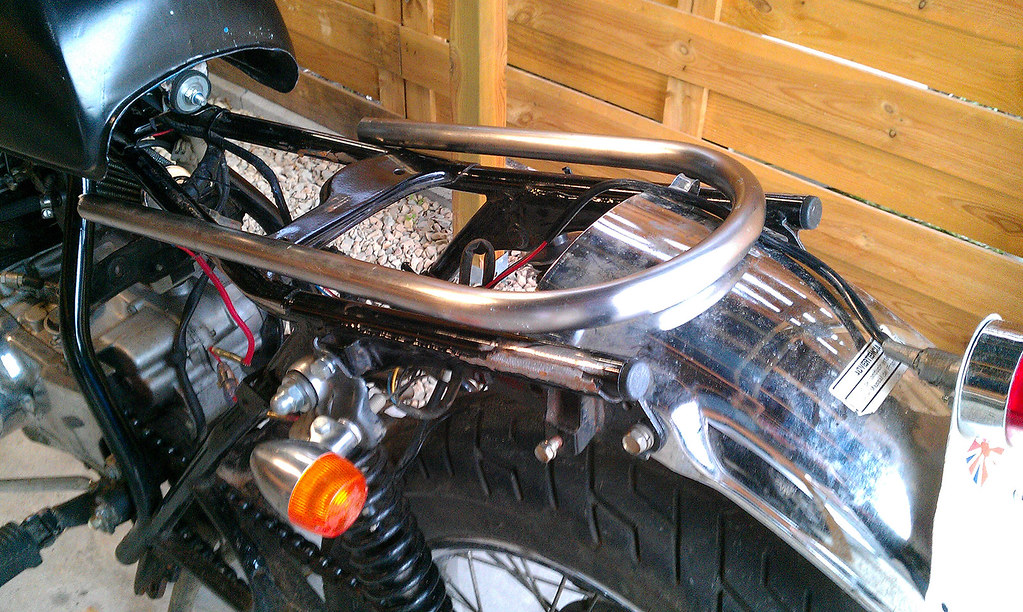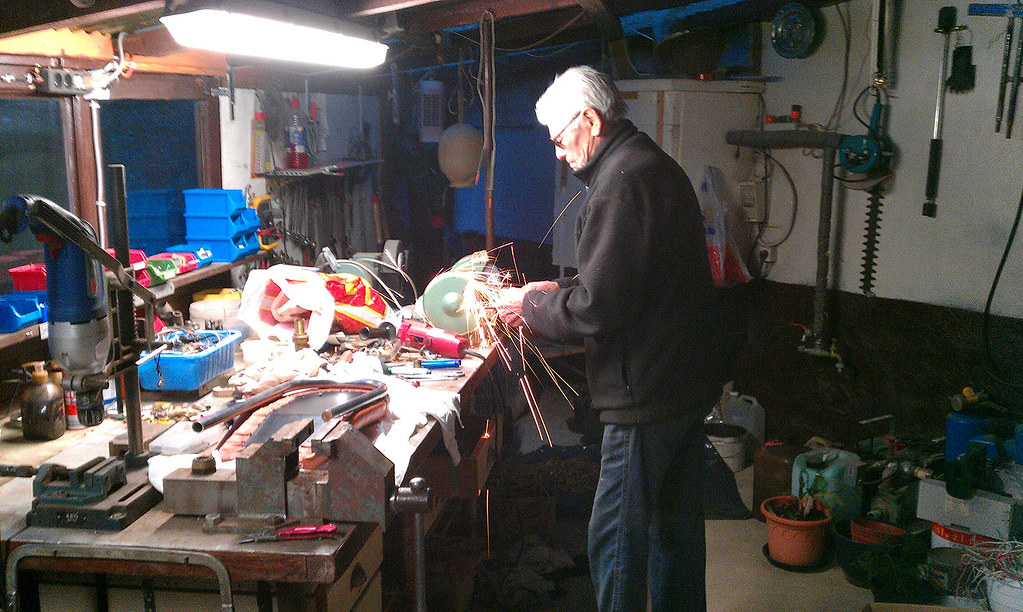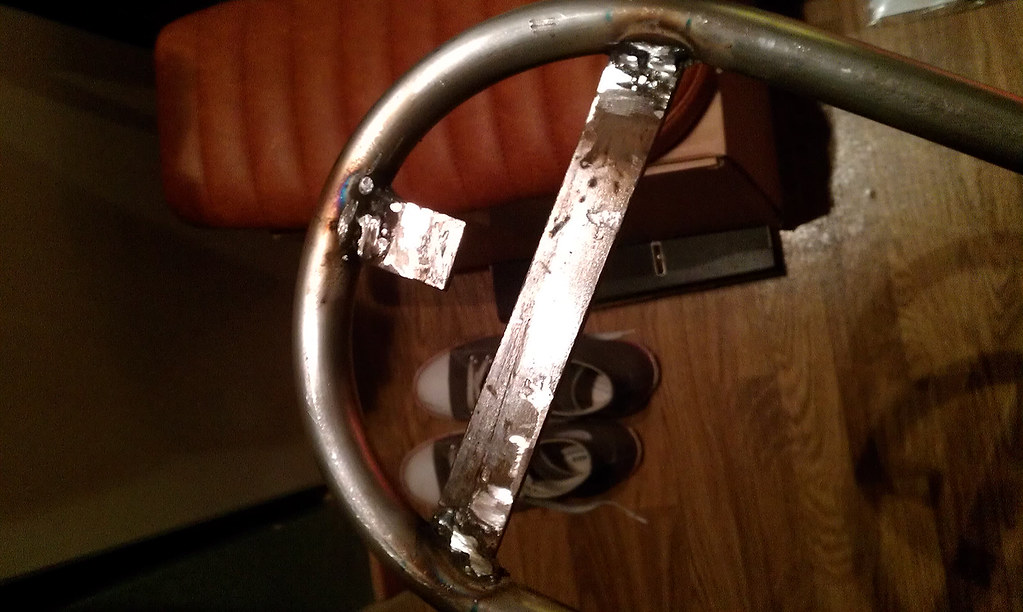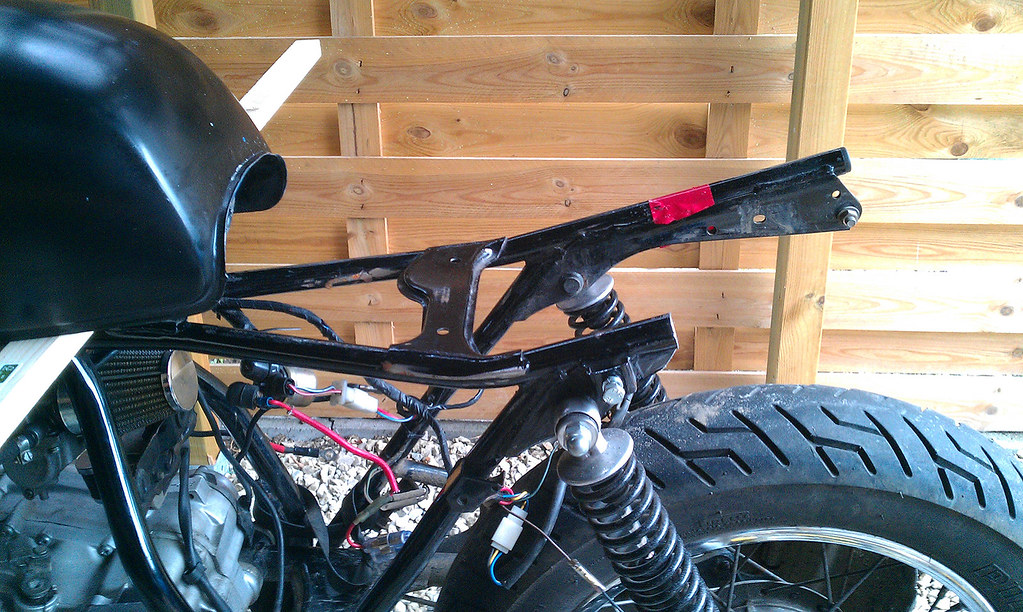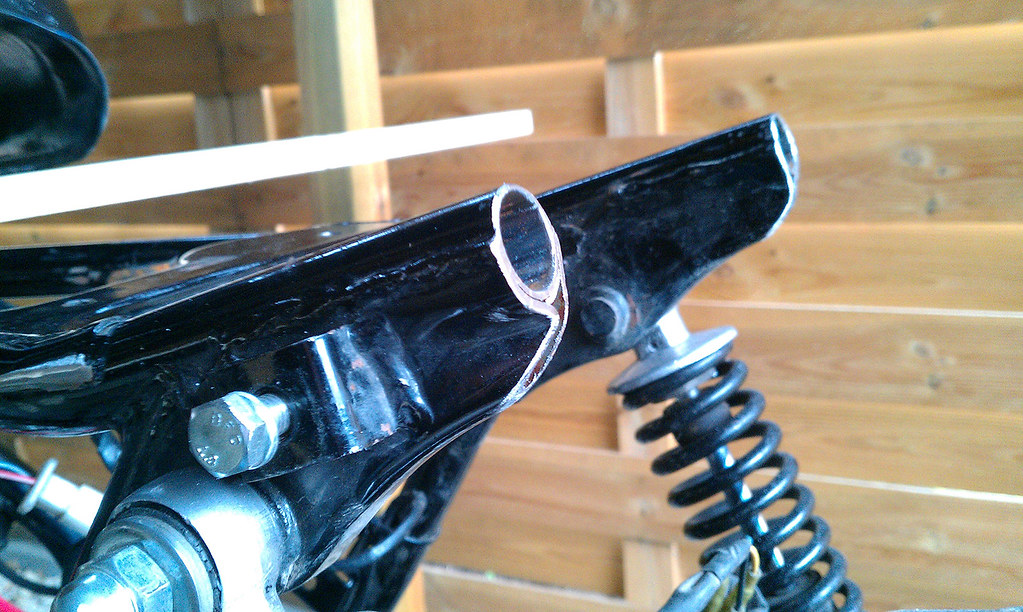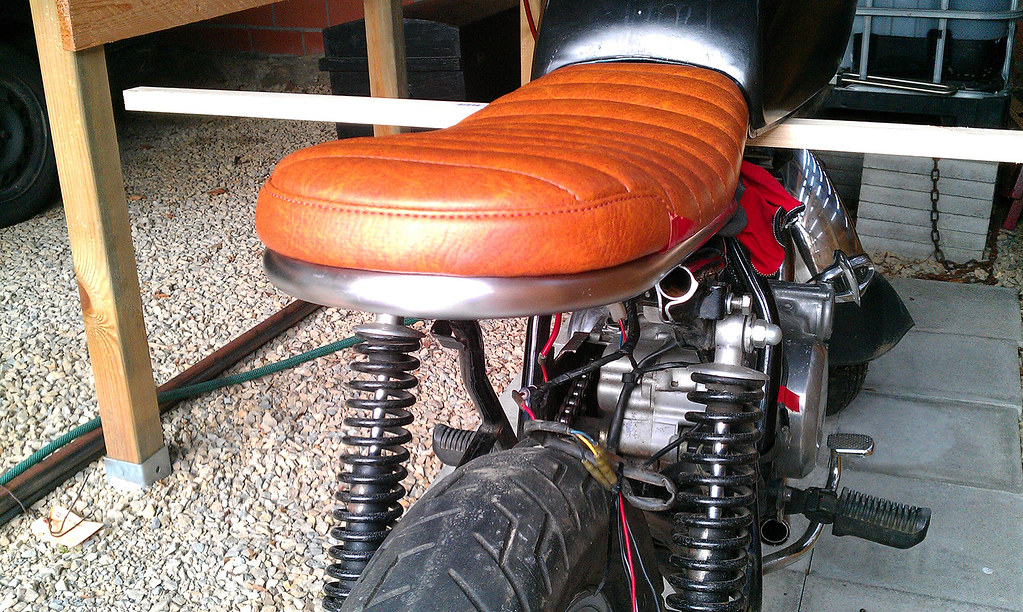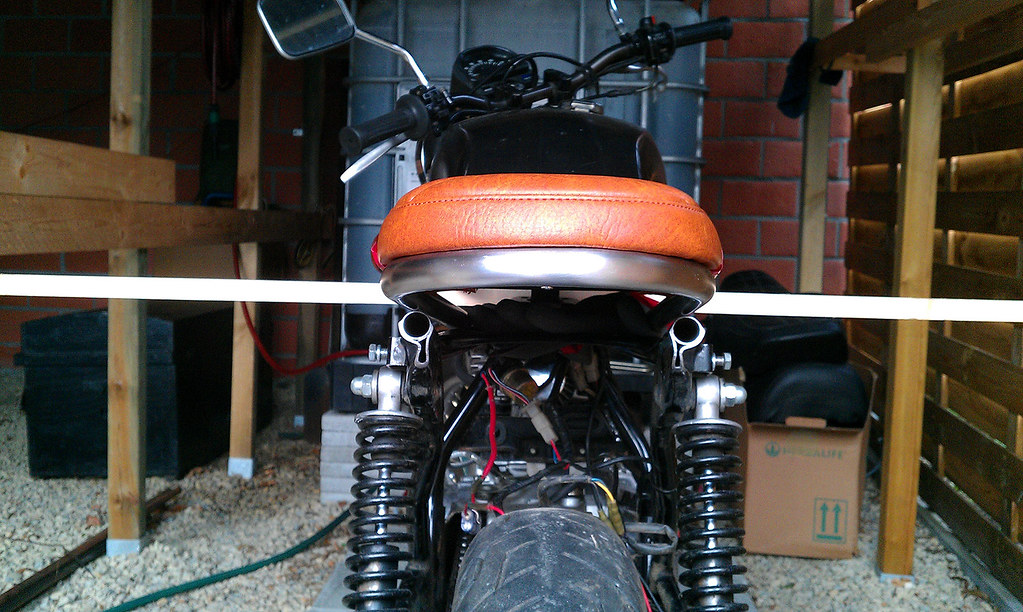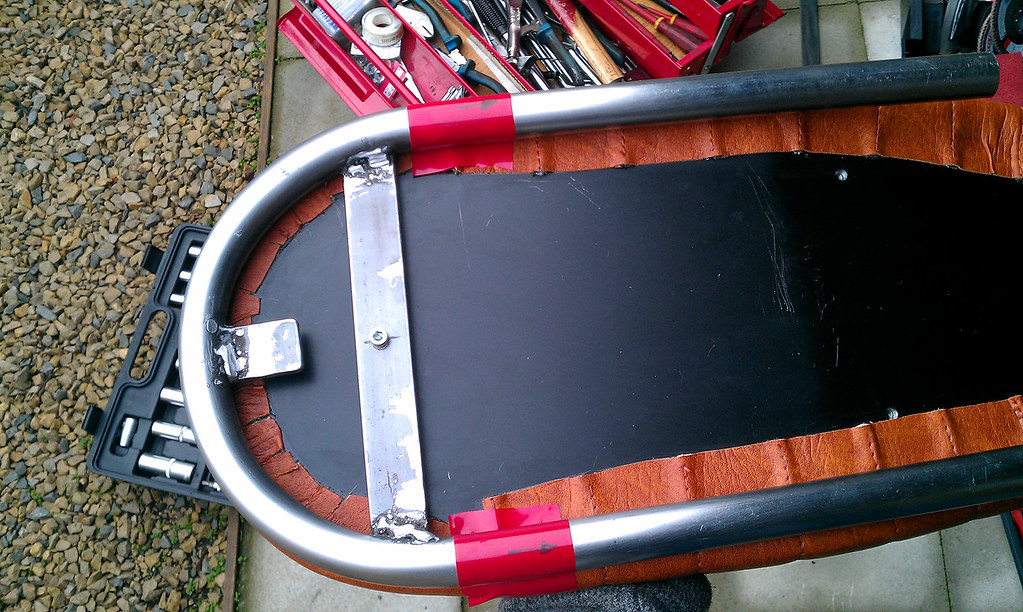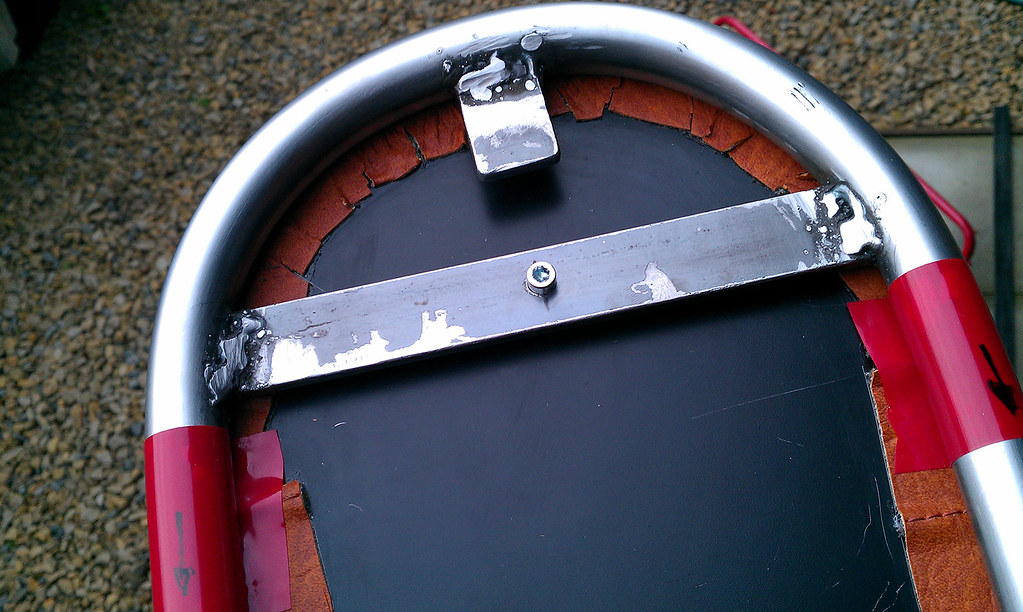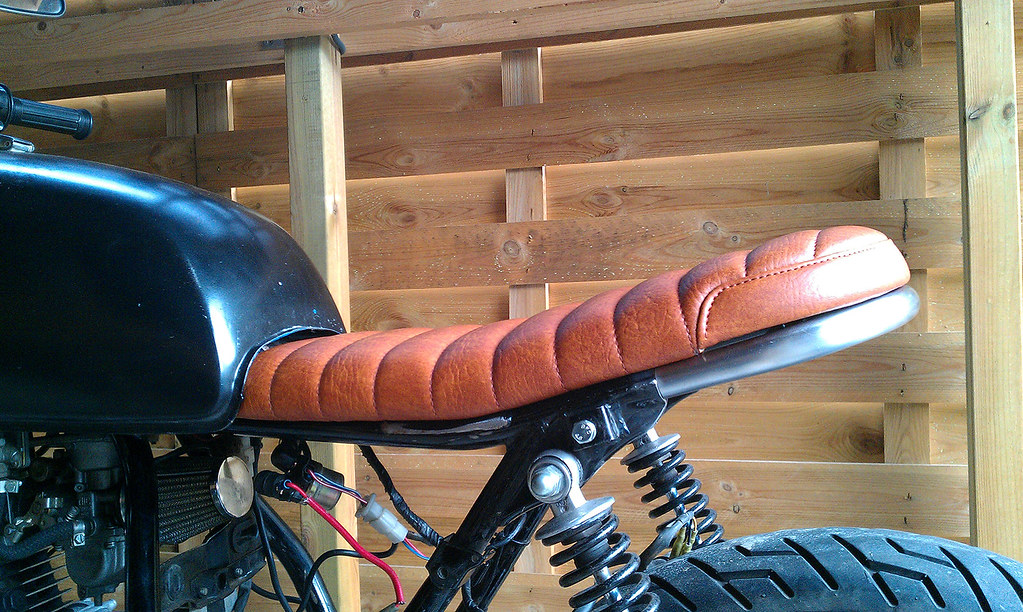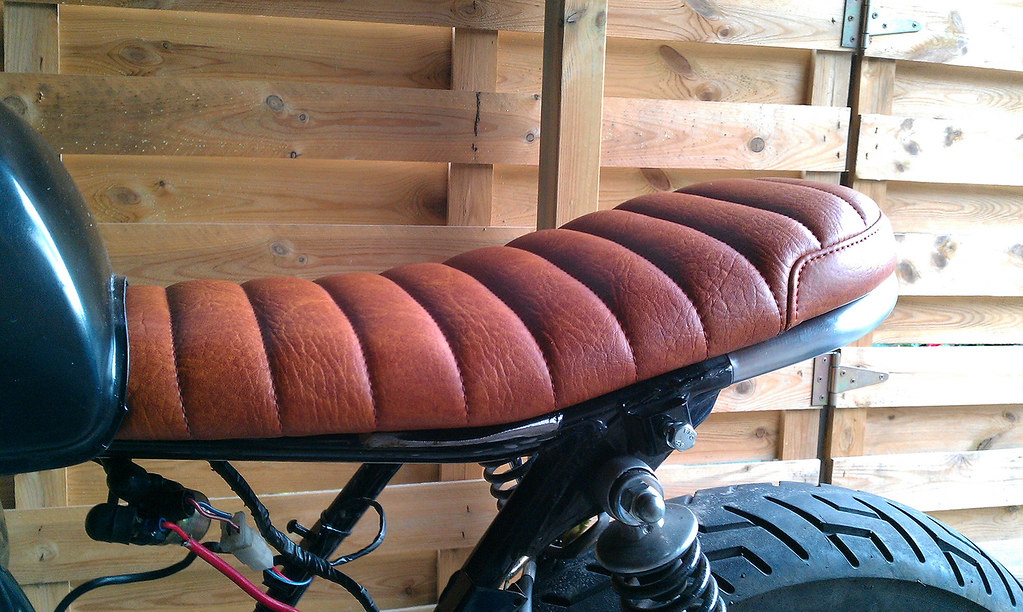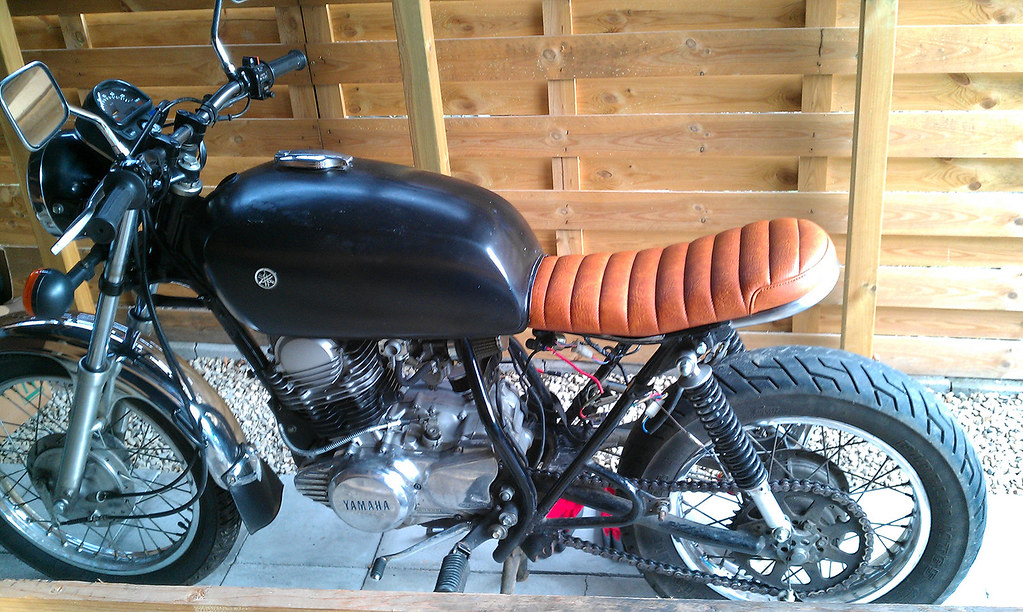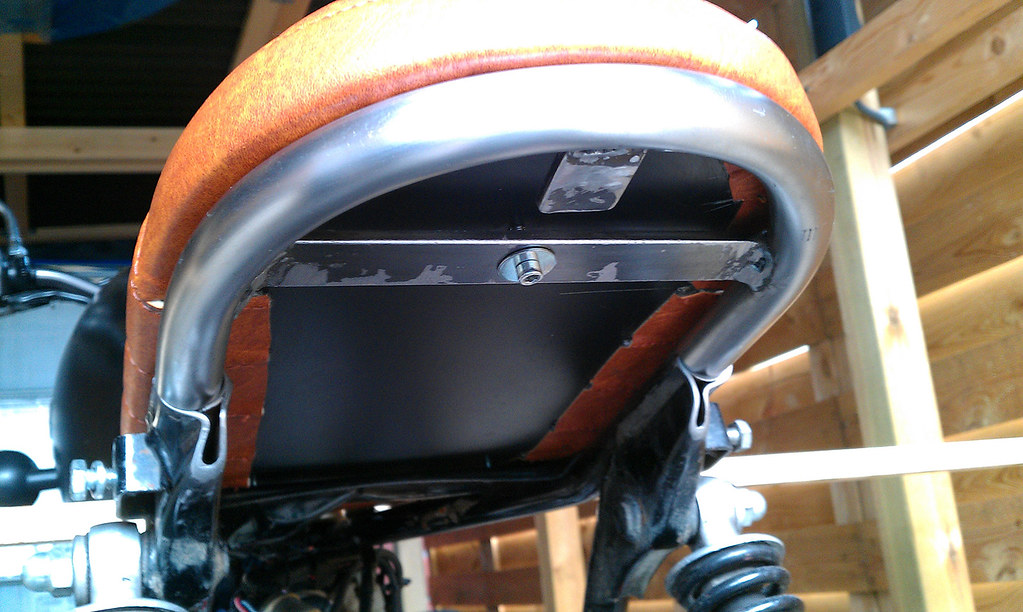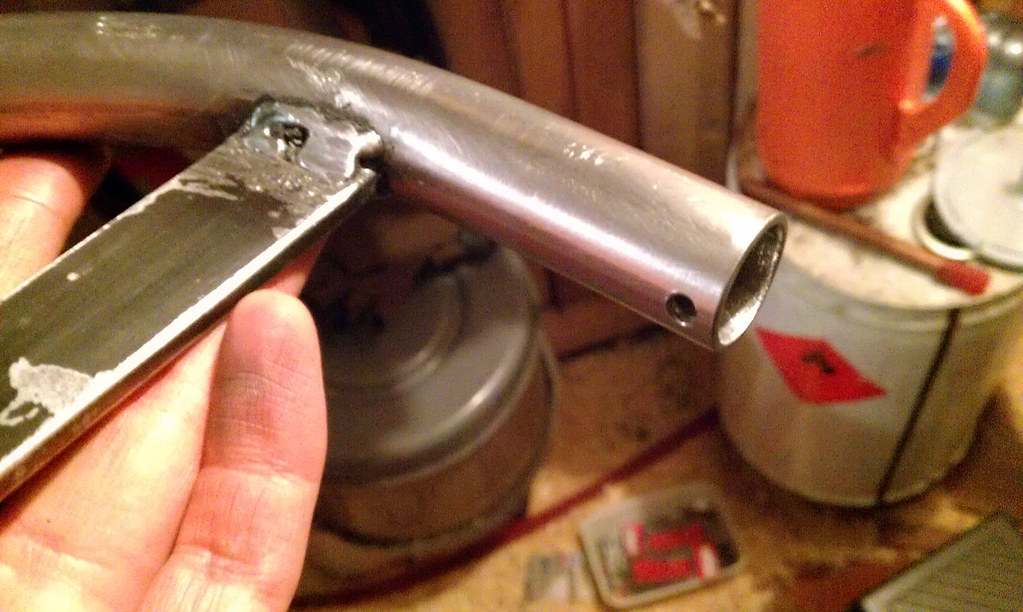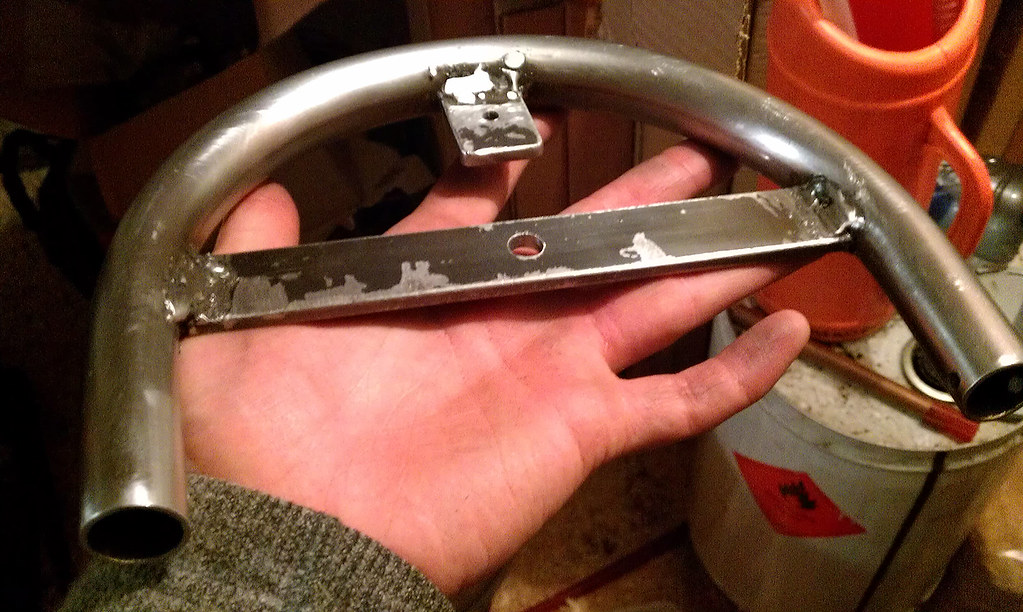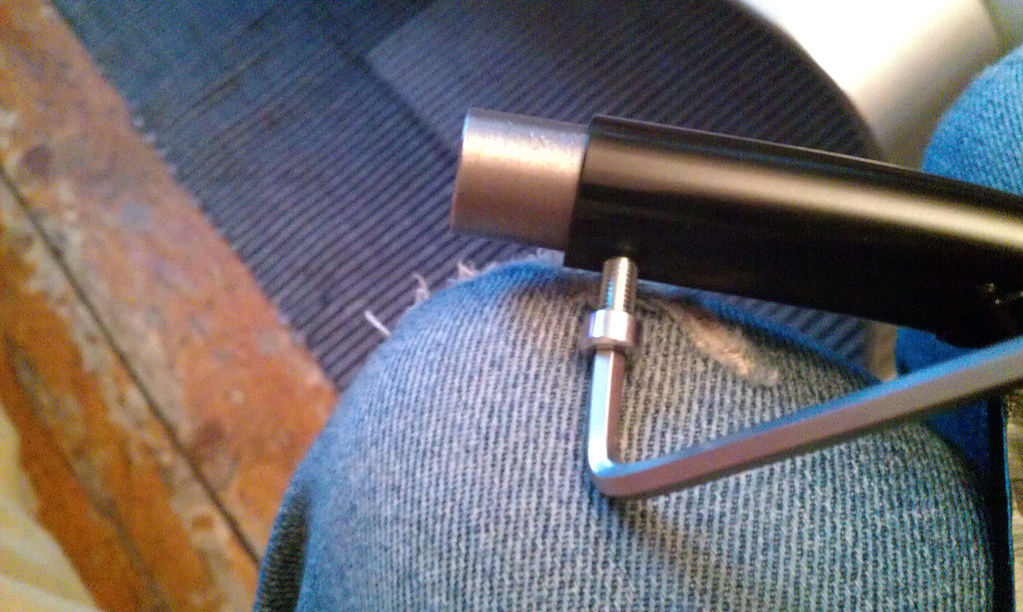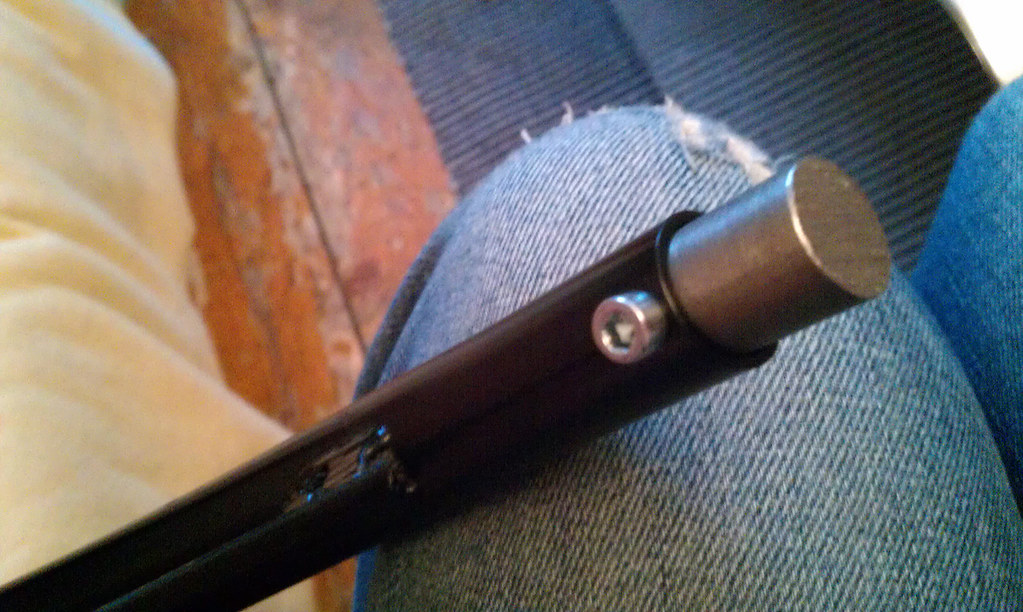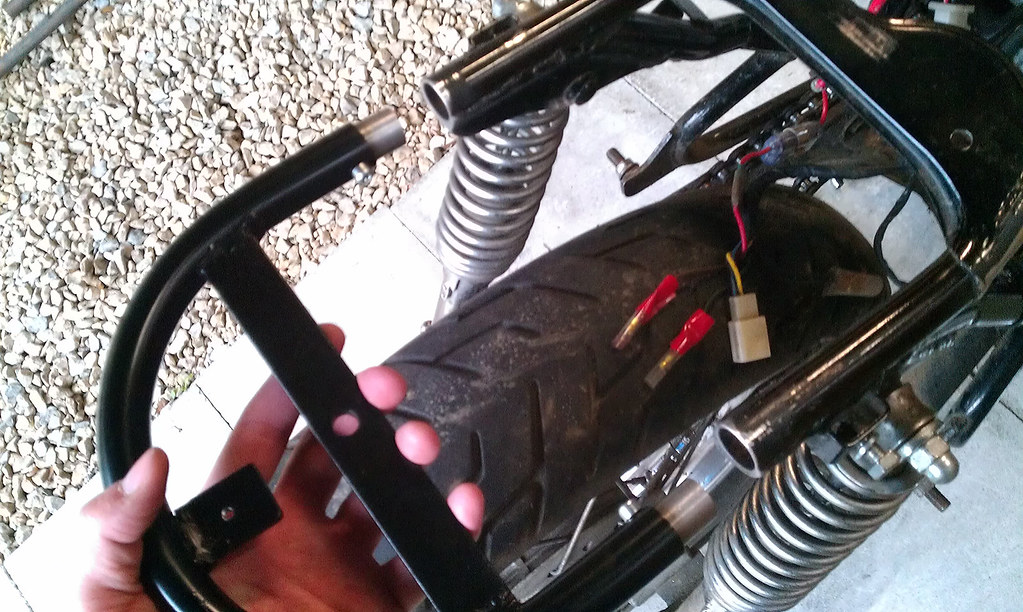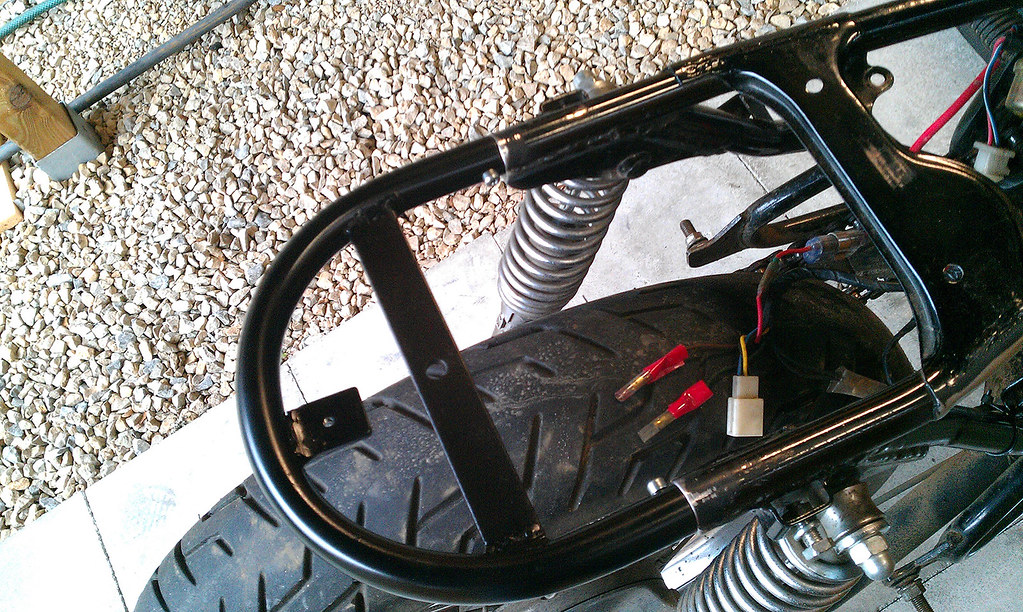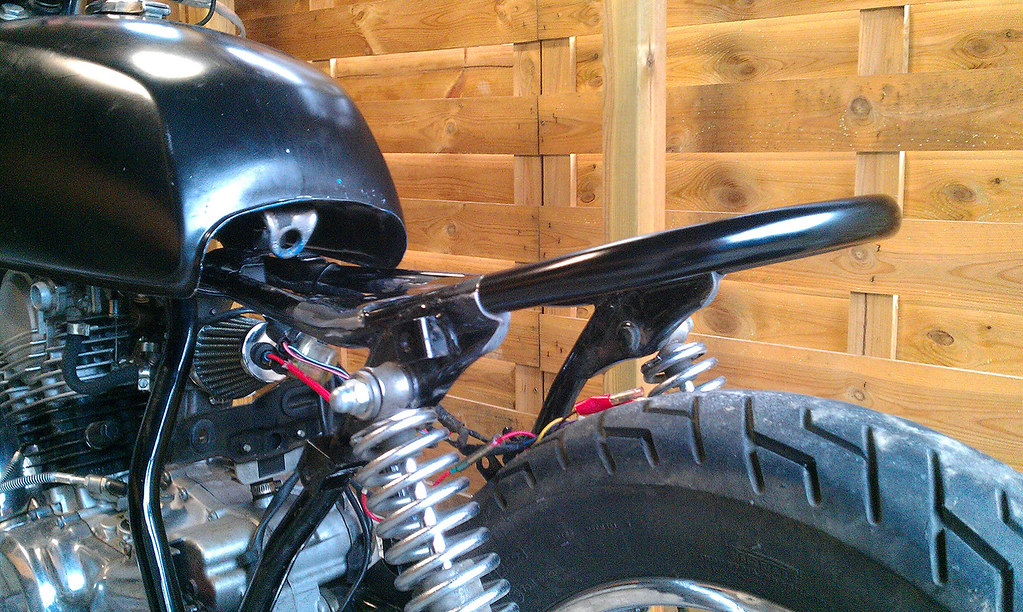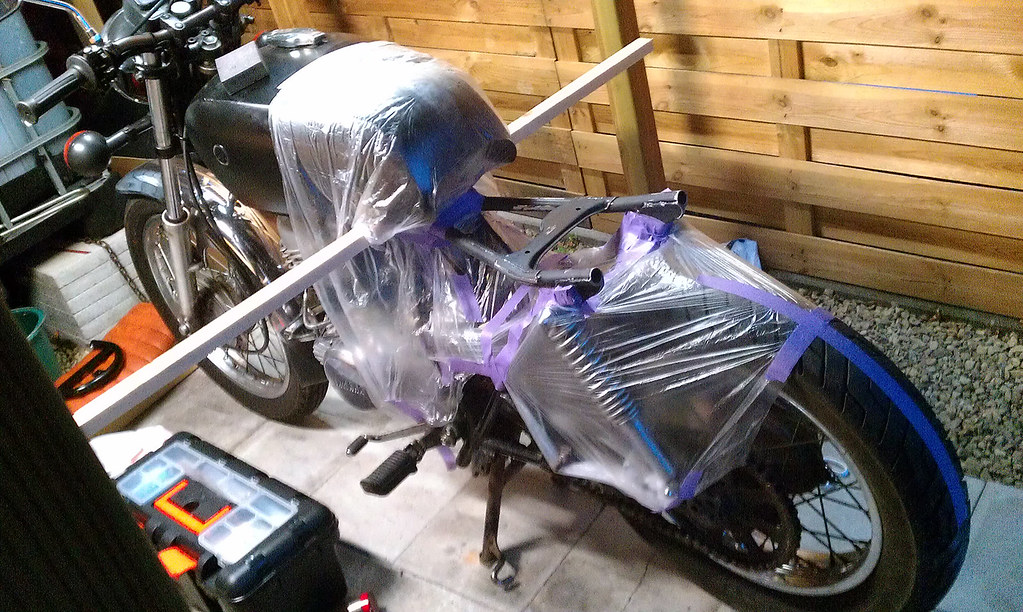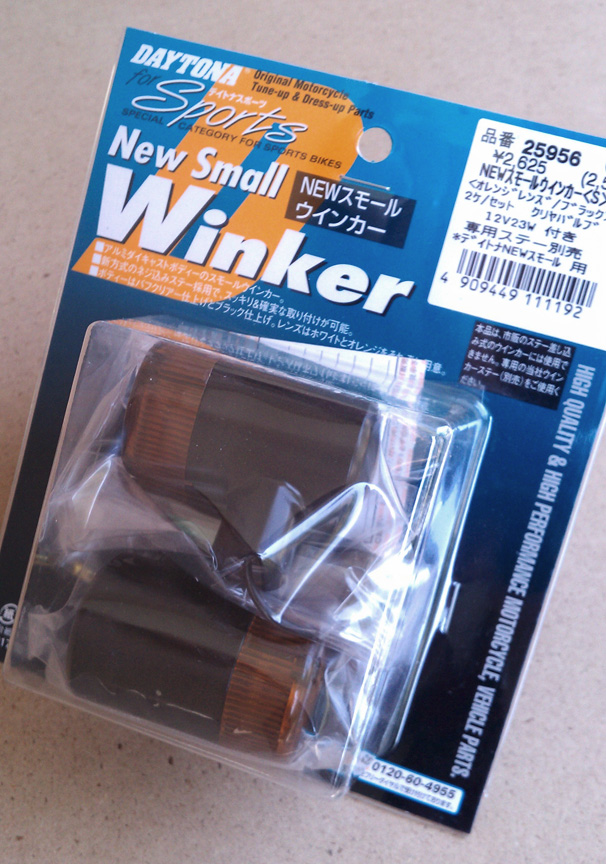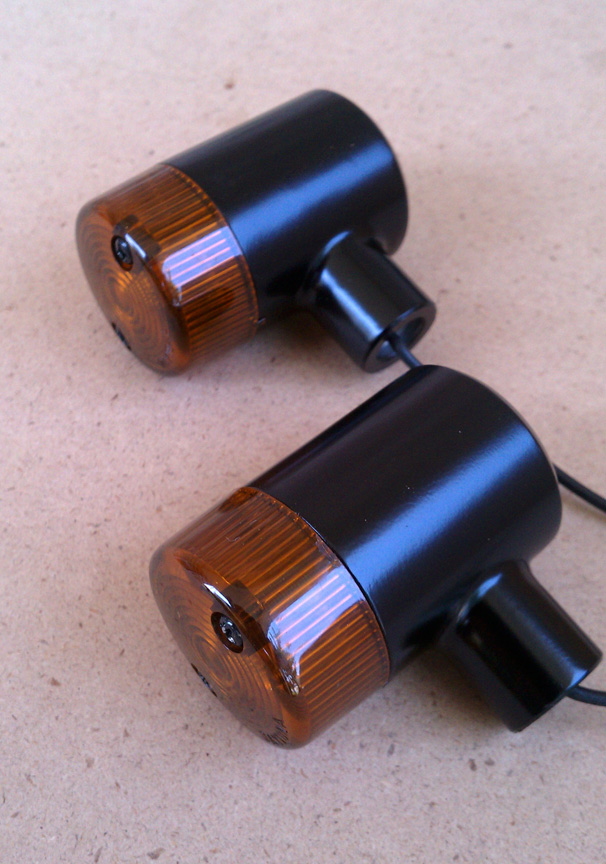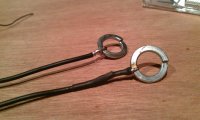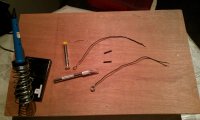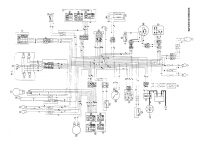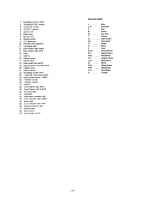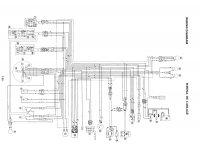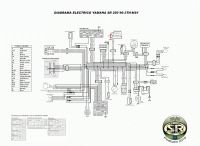chiel
New Member
Hello fellow builders,
I've been following some builds for quite a while and learned a lot from them, so i was thinking i could contribute and also use this build to learn even more. Short introduction: I'm a 26-year-old Belgian graphic designer and had a passion for bikes ever since i was a little kid. My dad used to drive superbikes and i dreamed about doing the same thing, but my mom would never allow it, so for years i forgot about this passion.
About 3 years ago my father in law decided it was time to learn how to ride a motorcycle and i was hooked again. I got my drivers license, bought a brand new bike and commuted to work on a daily basis. Best thing i ever did.
The bike is fantastic, but there were 2 drawbacks. It was full of new technology, which i didn't know anything about so had to go to the dealer for every small thing which is costly, time consuming and doesn't help you in the long run (when you're stranded somewhere on the side of the road).
The second drawback: when the weather gets colder out here they love to use a lot of salt on our roads to keep you on them. Since i didn't look forward to hose down my bike after every commute, and it would hurt my eyes too much to see my bike getting eaten away by this salty mess i decided to buy a 'winter bike'. A cheap, old, beaten-up but reliable motorcycle i wouldn't be afraid to (ab)use, and learn me some mechanics/metalworking. That's what i would tell myself, but it was an excuse to get a shiny retro bike like all the cool guys on here seem to have.
After a quick search i settled on a '94 Yamaha SR250 with only 19.000 Kms (± 12,000 Miles) who seemed to be in a decent shape. The previous owner slapped on a different tank (from an XS400), changed the seat (to something weird and home-made) and tried to 'café it' (his words). I even got the original parts with the bike and all i had to change was a dead battery. In retrospect, i overpaid and the bike was in a far worse condition than i had expected. Bought it in the first half of November, got it insured within the week en was thinking i would only mis a week or two of commuting with the bike, but currently i'm still fixing things that seem to break when i'm working on something else.
Well, long story short: judging by the old tank this is what she must have looked like 20 years ago:
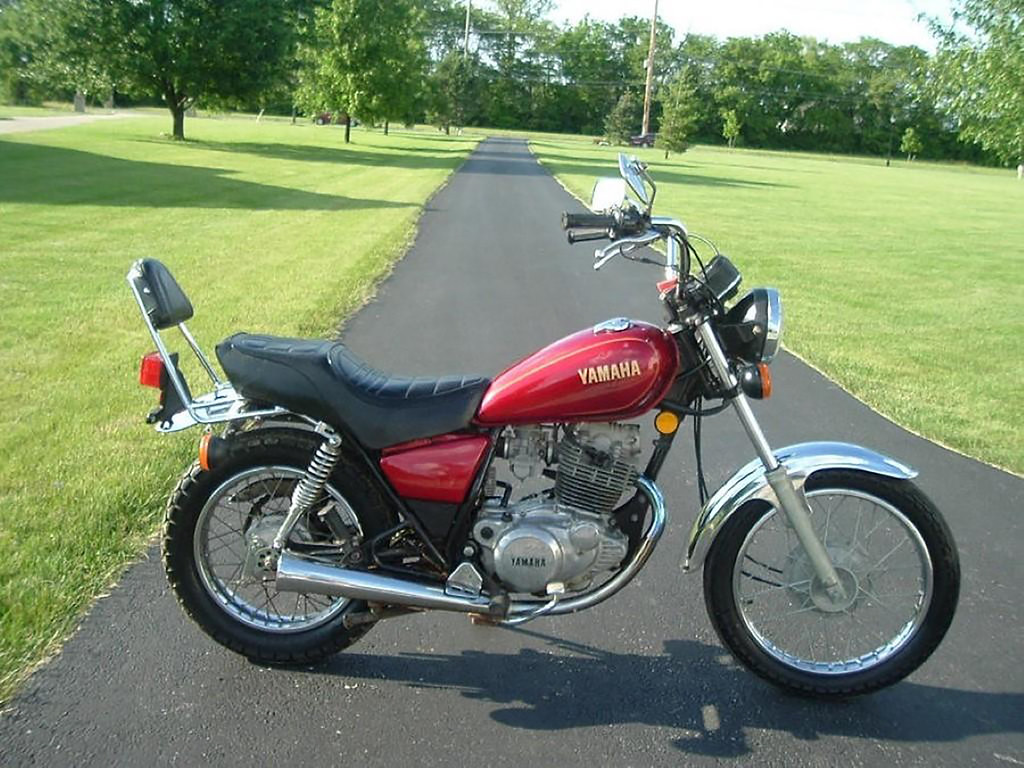
This is her the day i brought her home:
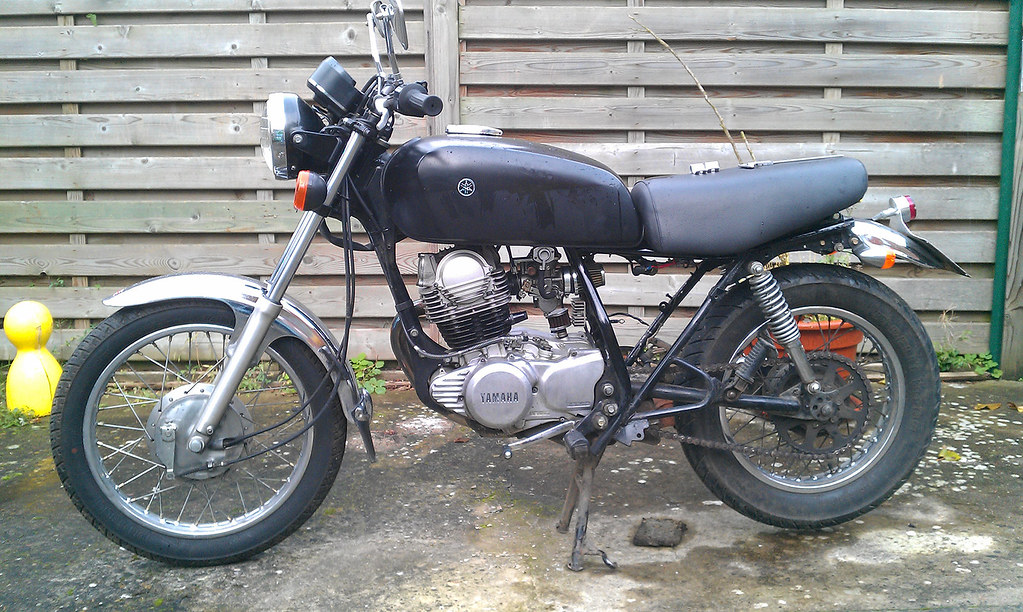
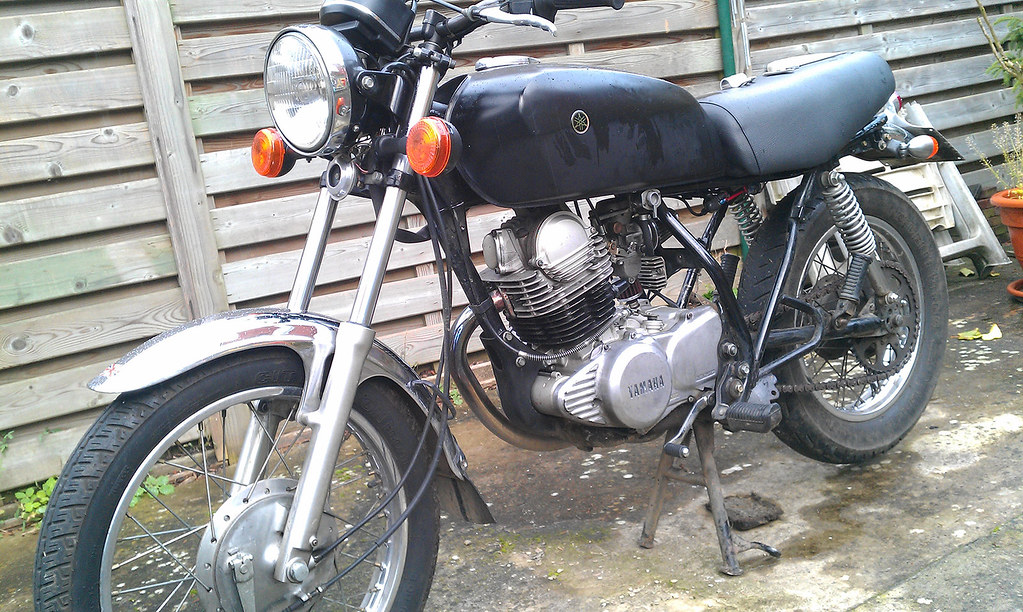
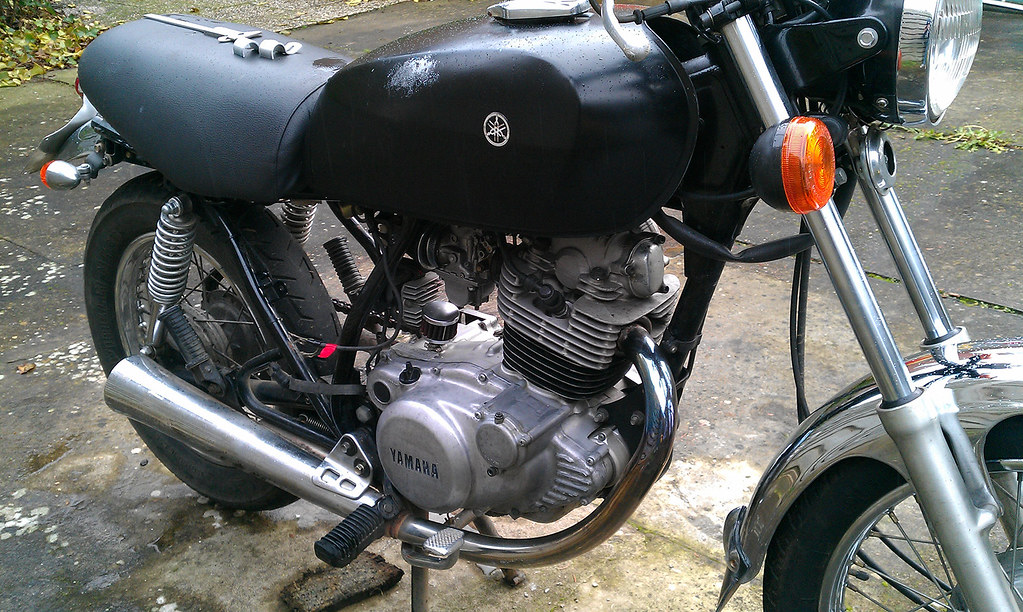
(this is where i started noticing some problems and a crappy seat job/subframe hack the previous owner did)
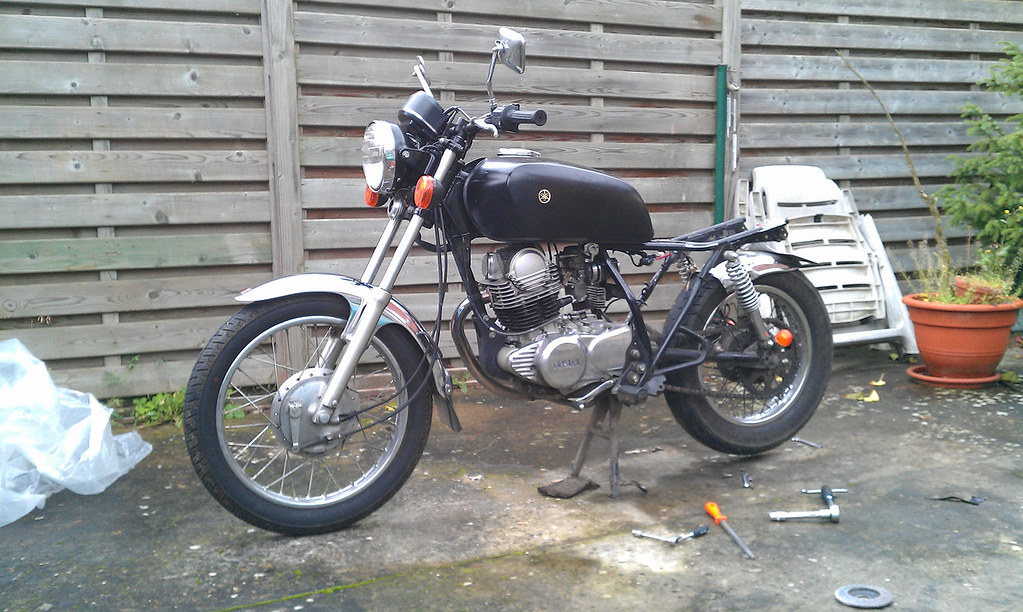
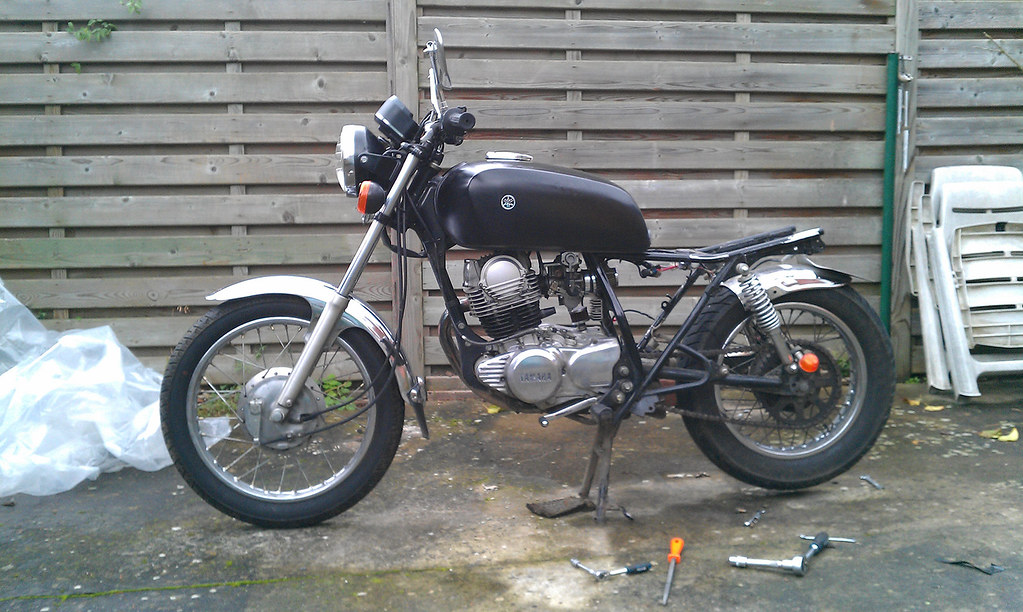
And this is where she sits currently:
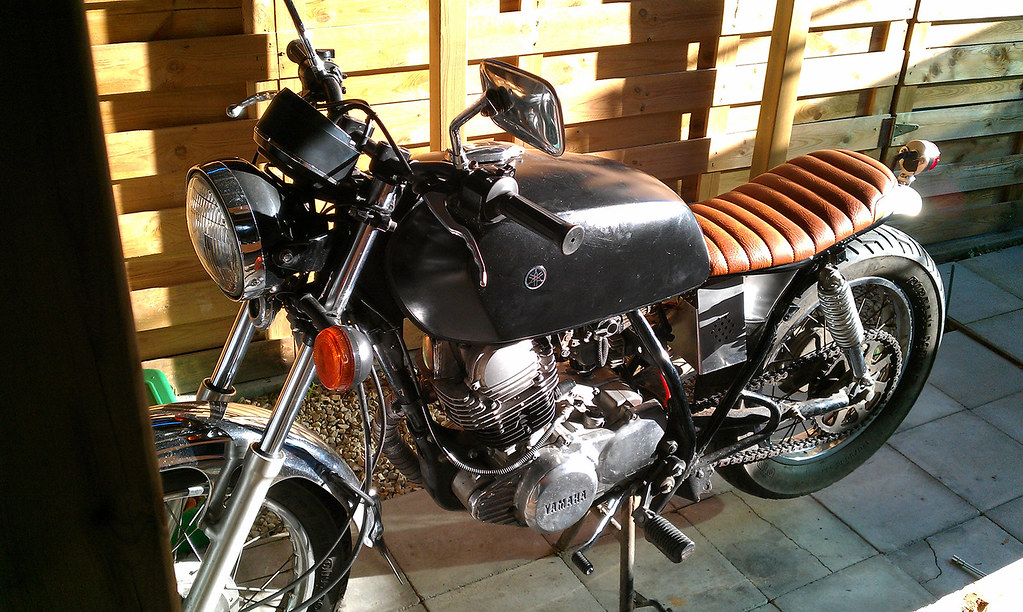
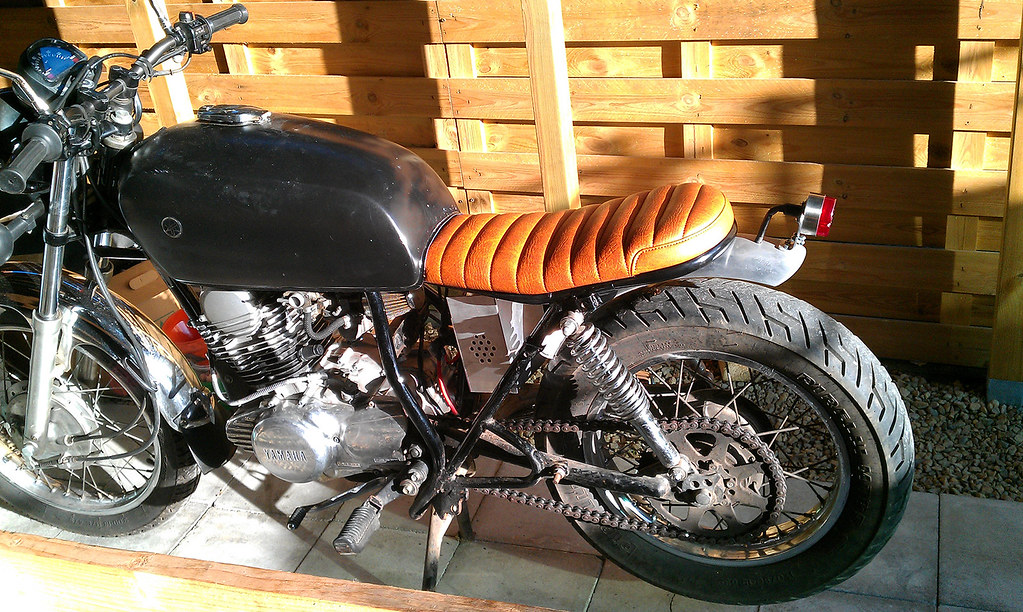
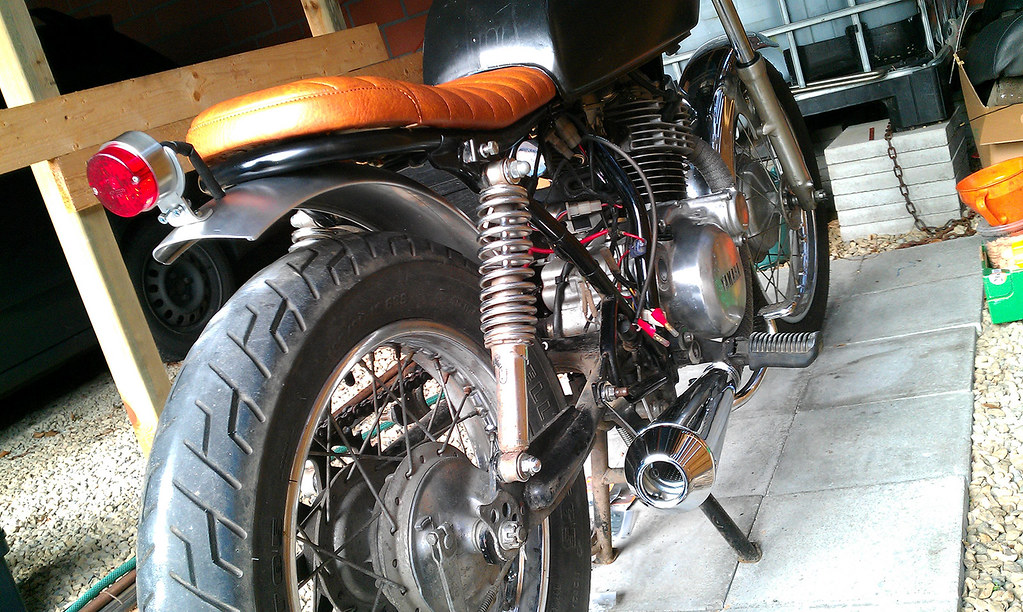
Managed to fix (and break) a lot of things, and snapped a lot of pics in the process, so i figured it was time to give her her own build thread and get some creative feedback from you guys. Say, share, upload whatever you like in this thread. It can only benefit from it.
Next time i get around to it i'll post the pics and progress from the last 2 months.
If it's ok with you guys i'll try to split it into seperate posts for easy viewing.
Thanks for reading!
I've been following some builds for quite a while and learned a lot from them, so i was thinking i could contribute and also use this build to learn even more. Short introduction: I'm a 26-year-old Belgian graphic designer and had a passion for bikes ever since i was a little kid. My dad used to drive superbikes and i dreamed about doing the same thing, but my mom would never allow it, so for years i forgot about this passion.
About 3 years ago my father in law decided it was time to learn how to ride a motorcycle and i was hooked again. I got my drivers license, bought a brand new bike and commuted to work on a daily basis. Best thing i ever did.
The bike is fantastic, but there were 2 drawbacks. It was full of new technology, which i didn't know anything about so had to go to the dealer for every small thing which is costly, time consuming and doesn't help you in the long run (when you're stranded somewhere on the side of the road).
The second drawback: when the weather gets colder out here they love to use a lot of salt on our roads to keep you on them. Since i didn't look forward to hose down my bike after every commute, and it would hurt my eyes too much to see my bike getting eaten away by this salty mess i decided to buy a 'winter bike'. A cheap, old, beaten-up but reliable motorcycle i wouldn't be afraid to (ab)use, and learn me some mechanics/metalworking. That's what i would tell myself, but it was an excuse to get a shiny retro bike like all the cool guys on here seem to have.
After a quick search i settled on a '94 Yamaha SR250 with only 19.000 Kms (± 12,000 Miles) who seemed to be in a decent shape. The previous owner slapped on a different tank (from an XS400), changed the seat (to something weird and home-made) and tried to 'café it' (his words). I even got the original parts with the bike and all i had to change was a dead battery. In retrospect, i overpaid and the bike was in a far worse condition than i had expected. Bought it in the first half of November, got it insured within the week en was thinking i would only mis a week or two of commuting with the bike, but currently i'm still fixing things that seem to break when i'm working on something else.
Well, long story short: judging by the old tank this is what she must have looked like 20 years ago:

This is her the day i brought her home:



(this is where i started noticing some problems and a crappy seat job/subframe hack the previous owner did)


And this is where she sits currently:



Managed to fix (and break) a lot of things, and snapped a lot of pics in the process, so i figured it was time to give her her own build thread and get some creative feedback from you guys. Say, share, upload whatever you like in this thread. It can only benefit from it.
Next time i get around to it i'll post the pics and progress from the last 2 months.
If it's ok with you guys i'll try to split it into seperate posts for easy viewing.
Thanks for reading!


